Vous pouvez lire le billet sur le blog La Minute pour plus d'informations sur les RSS !
Canaux
2732 éléments (56 non lus) dans 55 canaux
 Dans la presse
(21 non lus)
Dans la presse
(21 non lus)
 Du côté des éditeurs
(2 non lus)
Du côté des éditeurs
(2 non lus)
 Toile géomatique francophone
(23 non lus)
Toile géomatique francophone
(23 non lus)
Planet OSGeo
-
sur Sean Gillies: Laid off
Publié: 4 August 2023, 6:35pm CEST
My position evaporated on Monday, one of many layoffs at my job. This is a first for me. If you've got advice, I'm all ears. If you're a former coworker and looking for help finding a new job, hit me up. I'm good at reviewing resumes and enjoy telling hiring managers good things about good people.
I'm fortunate to be in a good position right now. My family is healthy, we are insured through Ruth's position at CSU, and have some savings. This is not the case for everyone who gets laid off, I know.
Am I going to let this derail my attempt to finish a 100 miler in September? No way. Looking for work will take time, and I'm picking up more family duties, but it looks like I'll also have more free time to spend on the trail this summer.
-
sur Jackie Ng: Announcing: MapGuide Maestro 6.0m12
Publié: 1 August 2023, 10:41pm CEST
Next stop on the tour: A new release of MapGuide Maestro
This release includes the following notable changes.
Improved MapGuide Open Source 4.0 authoring supportThis release improves the MapGuide Open Source 4.0 authoring experience with support for the new label justification setting for basic stylization labels.

This setting is part of the new v4.0.0 Layer Definition XML schema, whose .xsd file is now also included with this release (so XML validation against this schema will work)
Fusion editor enhancements for mapguide-react-layout featuresThis release includes several enhancements to the Fusion Flexible Layout editor to support various features that can be taken advantage of when loaded into a mapguide-react-layout viewer. These new enhancements are accessible from the layout settings panel and require the latest release of mapguide-react-layout to leverage these new features.

The Manage Custom Projections button opens up a new dialog that lets you manage and pre-register custom proj4 definitions for your application. By pre-registering these definitions in the Flexible Layout document itself, you can avoid needing to perform a epsg.io lookup for any projections found in the viewer init process that is not EPSG:4326 or EPSG:3857
 The Manage Settings button opens up a different dialog that lets you managed the app settings in the Flexible Layout document. These are arbitrary key/value pairs that your mapguide-react-layout viewer will be initialized with and your viewer code can read such settings at runtime to control and drive whatever custom functionality you may have.
The Manage Settings button opens up a different dialog that lets you managed the app settings in the Flexible Layout document. These are arbitrary key/value pairs that your mapguide-react-layout viewer will be initialized with and your viewer code can read such settings at runtime to control and drive whatever custom functionality you may have.
Other Changes- Improved layer editor UI responsiveness when layer points to a feature source with a really large schema
- Increased schema walk/describe timeout to handle really large schemas
- Fix: Connection error dialog buttons are no longer cut off
- Fix: Transactional package drag-and-drop loading works again
- Fix: Broken rest addin due to missing RestSharp dependency
- Fix: Fill/line pattern dropdowns in layer editor are working again
- Fix: MgTileSeeder will now accept bounding boxes outside the [-90, -180, 90, 180] lat/long domain by clamping any outside coordinates to be within this domain.
Download -
sur OSGeo.nl: Nieuw bestuur Stichting OSGeo.nl
Publié: 1 August 2023, 9:47pm CEST
Stichting OSGeo.nl heeft sinds juli 2023 een nieuw bestuur! Dit nieuwe bestuur kijkt onwijs uit om samen met jullie vol enthousiasme en plezier te zorgen dat we samen mensen nog meer bekend maken met het gebruik en de ontwikkeling van open source software voor geo-informatie. Als je benieuwd bent wat er allemaal besproken werd bij het debuut van dit nieuwe bestuur dan is de nota van deze laatste bestuursvergadering is te lezen op de wiki via: [https:] -
sur GeoSolutions: Free Webinar: GeoNode 4.1.0 release
Publié: 1 August 2023, 3:23pm CEST
You must be logged into the site to view this content.
-
sur PostGIS Development: PostGIS 3.4.0beta2
Publié: 29 July 2023, 2:00am CEST
The PostGIS Team is pleased to release PostGIS 3.4.0beta2! Best Served with PostgreSQL 16 Beta2 and GEOS 3.12.0.
This version requires PostgreSQL 12 or higher, GEOS 3.6 or higher, and Proj 6.1+. To take advantage of all features, GEOS 3.12+ is needed. To take advantage of all SFCGAL features, SFCGAL 1.4.1+ is needed.
3.4.0beta2This release is a beta of a major release, it includes bug fixes since PostGIS 3.3.4 and new features.
-
sur PostGIS Development: PostGIS 3.3.4 Patch Release
Publié: 28 July 2023, 2:00am CEST
The PostGIS development team is pleased to announce bug fix release 3.3.4, mostly focused on Topology fixes.
-
sur Stefano Costa: Sono vegetariano da due anni
Publié: 27 July 2023, 9:07pm CEST
In questi giorni di fine luglio, due anni fa, ho deciso di smettere di mangiare carne e pesce e animali. Per un po’ di tempo, mi sono detto, ci provo. E sono passati due anni. Perché?
Non è stata una decisione improvvisa e penso che siano anni che mi porto dietro l’idea di non nutrirmi più di altri animali, ma l’ho sempre considerata molto difficile da attuare, molto faticosa da spiegare. E invece è stato piuttosto semplice.
Sono arrivato a questa decisione da due strade, il rispetto per gli animali e la convinzione che non esista un futuro per l’umanità carnivora.
Il rispetto per gli animali mi porta a rimanere inquieto sul consumo di prodotti di origine animale, in particolare latticini e uova, poiché la loro produzione su larga scala richiede necessariamente quegli allevamenti intensivi disumani da cui provengono gli animali destinati alla macellazione. Ho quindi grande rispetto per chi pratica una alimentazione vegana e non capisco perché la prima domanda che mi viene rivolta quando dico di essere vegetariano è se io non sia mica vegano, nemmeno fosse una malattia infettiva. Ho ridotto il consumo di latticini, soprattutto lo yogurt che ho sostituito con prodotti alternativi che sono in prevalenza a base di soia. La coltivazione di soia non distrugge le foreste amazzoniche, per inciso.
Le considerazioni planetarie sono le stesse che vengono ripetute da anni nell’ambito del discorso sulla crisi climatica globale. L’allevamento consuma una quantità di suolo enormemente superiore alla superficie richiesta per coltivare le piante in grado di fornire lo stesso apporto nutritivo. L’allevamento produce gas serra. Non cedo ai finti fondamentalismi eco-fascisti e credo che le popolazioni che praticano allevamento tradizionale debbano poter continuare a praticarlo. La stessa cosa non può essere detta per l’allevamento industriale tipico dei paesi occidentali. Queste sono convinzioni personali, che vorrei trovassero sponda in ambito politico.
Sono un archeologo, conosco abbastanza bene la storia della cultura materiale dell’umanità e credo che i cambiamenti culturali che continuamente avvengono siano ben più significativi di qualunque “tradizione” a cui si vuole rimanere aggrappati. La lista delle pratiche oggi ritenute incivili e inconcepibili che “abbiamo sempre fatto” è lunghissima, quindi non c’è nessun ostacolo concettuale ad aggiungerci anche il consumo di carne.
Ora sono un po’ più tranquillo quando mi siedo a tavola.
-
sur QGIS Blog: QGIS Contributor meeting at BIDS ‘23 Vienna
Publié: 26 July 2023, 5:18pm CEST
We are happy to announce that OSGeo kindly extended an invitation to have a QGIS contributor meeting joining the OSGeo Community Sprint 2023 during the Big Data from Space 2023 conference in Vienna.
The 26th QGIS Contributor Meeting will be held from Monday, November 6th to Thursday, 11th.
- Where: Austria Center Vienna [https:]]
- When: Mon 2023-??11-06 09:00 -?? Thu 2023-11-09 12:00
For more details and to sign up, please visit the corresponding OSGeo announcement page.
About QGIS contributor meetings
QGIS Contributors Meetings are volunteer-driven events where contributors to the QGIS project from around the world get together in a common space – usually a university campus. During these events, contributors to the QGIS project take the opportunity to plan their work, hold face-to-face discussions and present new improvements to the QGIS project that they have been working on. Everybody attending the event donates their time to the project for the days of the event. As a project that is built primarily through online collaboration, these meetings provide a crucial ingredient to the future development of the QGIS project. The event is planned largely as an ‘unconference’ with minimal structured programme planning. We do this to allow attendees the freedom to meet dynamically with those they encounter at the event. Those sessions that are planned are advertised on the event web page, and we try to enable remote participation through video conferencing software. Although our hosts are not funded and donate the working space to us, we show our appreciation by making one of our software release’s splash screens in honour of that host, which is a great way to gain exposure of your institution and country to the hundreds of thousands of users that make use of QGIS.
About OSGeo
The Open Source Geospatial Foundation (OSGeo) has a long tradition of organizing code sprints for developers of Free and Open Source GIS software.
Since 2009, the Open Source Geospatial Foundation (OSGeo) has been organizing a yearly Code Sprint of the “C Tribe” OSGeo projects, which has evolved into a full OSGeo Community Sprint and all “Tribes” are included/welcome. Leading developers of projects like GDAL, PostGIS,
MapServer, GeoServer, GRASS, QGIS, PDAL, pygeoapi and many more get together to discuss new ideas, hack, decide, tackle large geospatial problems and have fun.The OSGeo Community Sprint is open to all who wish to participate in one or more projects. There is always plenty to do – it’s not all about programming. Translation, documentation, feedback, discussions, testing – all this is also important for projects so everyone is cordially invited to attend the code sprint!
About BiDS
BiDS brings together key actors from industry, academia, EU entities and government to reveal user needs, exchange ideas and showcase the latest technical solutions and applications touching all aspects of space and big data technologies, providing a unique opportunity to discuss and present the most recent innovations and challenges encountered in the context of big data from space. The 2023 edition of BiDS will focus not only on technologies enabling insight and foresight inferable from big data from space. Together, we want to emphasize how breakthrough space data-driven technologies impact society’s grand challenges, such as climate change and the green transition.
The event, organized by the European Space Agency (ESA) together with the European Union Satellite Center (SatCen) and the Joint Research Center (JRC), will take place at the Austria center Vienna, and counts on the support of the partners FFG, Austria in Space and the Federal Ministry Republic of Austria.
-
sur Volker Mische: FOSS4G 2023
Publié: 22 July 2023, 9:50pm CEST
Finally, after missing one virtual and one in person global FOSS4G I had again the chance to attend a global in-person FOSS4G conference. Thanks Protocol Labs for sending me. This year it was in Prizren, Kosovo. I’m a bit late with that post, but that’s due to doing some hiking in Albania right after the conference.
The organization and venueWow. It’s been my favourite venue of all FOSS4Gs I’ve been to so far. The exhibition hall was a great place to hang out, combined with the excellent idea of a 24h bar. I’m not sure if it was used at all times, but definitely for more than 20h a day. Outside, there was plenty of space and tables to hang out, and very close by another set of tables that formed the “work area”. Which was another great place to hang out, with enough power sockets and shade for the hot days.
The main stage was an open air stage with enough seating for everyone. It was converted for the gala dinner to a stage with an excellent live band and the usual big round tables.
For me, the best part was that even the accommodation was on-site. The barracks of the former military basis, which now serve as student dorms, were our home for a week. Pretty spartan, but at a conference I don’t really spend much time in my room, I mostly need just some place to sleep.
Having everything, the talks, exhibition, social events and accommodations on-site makes it easy to maximize the time for socializing, which for me is the number one reason to attend a conference.
Everything was well organized, and it was great to see so many volunteers around.
The talksI haven’t really selected the talks I went to. I rather joined others where they were going, or listened to recommendations. Often, I just stayed in the rest of the slot to see what else is there. My favourite talks were:
- Smart Maps for the UN and All - keeping web maps open: For me, it was the first time I saw someone speaking at a FOSS4G about using IPFS that wasn’t me. It’s great to see that it gains traction for the offline use case, where it just makes a lot of sense. UN Smart Maps is part of the UN OpenGIS initiative, it features a wide range of things, even an AI chatbot called TRIDENT that transforms the text into Overpass API calls. Try TRIDENT it out yourself, when you open the developer console, you can see the resulting Overpass API calls.
- Offline web map server “UNVT Portable”: This talk got into more detail about using Raspberry Pis to have map data stored in IPFS for offline use. It’s very similar to what I envision, the only difference is that I’d also like to keep the storage in the browser. But I surely see a future, where those efforts are combined, to have a small easy server you can deploy, with in browser copies of subsets of the data to be able to work completely offline in the field. The original UNVT Portable repository doesn’t use IPFS, but Smart Maps Bazaar does, which seems to be its successor.
- B6, Diagonal’s open source geospatial analysis engine: A presentation of the B6 tool for geospatial analysis for urban planning. It has a beautiful interface. I really like the idea of doing things directly on the map in a notebook-style way, where you perform certain steps after each other.
- Elephant in the room: A talk about how many resources to computations take? Do we always need it? It’s very hard, often impossible, to find out how environmentally friendly some cloud services are. One of the conclusions was that cheaper providers likely use less power, hence are harming the environment less. I would like if there would be better ways (e.g. it misses things like economies of scale of large providers), but I agree that this might be the best metric we currently have. And I also hope there will be more economic pressure to save resources.
- There was a closing keynote from Kyoung-Soo Eom, who was talking about his long journey in open source GIS, but also his history with Kosovo, where he was also on a mission in 1999. Quite inspiring.
My talk about Collaborative mapping without internet connectivity was about a browser based offline-first prototype that uses IPFS to enable replication to other peers. The project is called Colleemap and is dual-licensed under the MIT and Apache 2.0 license. Although I tried the demo bazillion times before my talk, it sadly didn’t work during my talk. Though, trying it later with various people, I was able to get 4 peers connected once. I even saw it working on a Windows machine. So it really works cross-platform.
For the future I hope to work closer with the people from the UN OpenGIS initiative, it would be great to combine it with their Raspberry Pi based prototype.
Things I’ve learntThe Sentinel-2 satellite imagery is available from multiple sources, directly from Copernicus Open Access Hub or through cloud providers like AWS, Azure of Google Cloud. From the cloud providers you only get the level-2 data. They might use the original level-2 data or do their own atmospheric correction based on the level-1 data. Or even re-encode the data. So it’s hard to tell which kind of data you actually get.
As far as I know (please let me know if I’m wrong), there isn’t any mirror of the full level-1c data. You can only get it through the Copernicus Open Access Hub and there the older images are stored in the long term archive on tape, where it can take up to 24h for the data to be available for download (if it works).
Ideally, there would be a mirror of the full level-1c data (where the ESA would provide checksums of their files) and a level-2 version, where the exact process is openly published, so that you can verify how it was created. The problem is the storage cost. The current level-2 data is about 25 PiB, which leads to storage costs of over $500k USD a month if you would store it on AWS S3 Standard at the current pricing (I used the $0.021 per GB).
Final thoughtsIt was great to meet Gresa and Valmir from the local organizing committee before the FOSS4G in March at the OSGeo German language chapter conference FOSSGIS in Berlin. That made it easy for me to connect to the event right from the start. If there’s one thing future FOSS4Gs should adapt, it’s the cheap on-site (or close by) accommodation. I think that shared bathrooms is also much smoother to have, if you know that everyone in the accommodation is from the conference. We had something similar with the BaseCamp in Bonn during the FOSS4G 2016 and the international code spring in 2018 during the FOSSGIS conference, where the whole place was rented for the time of the events.
Though, of course, I also missed some of my longtime FOSS4G friends I hadn’t seen in a long time. I hope you’re all doing well and will meet again soon.
-
sur KAN T&IT Blog: Jornadas FOSS4G 2023 Kosovo
Publié: 21 July 2023, 9:00pm CEST
Querida comunidad, como saben, en junio estuvimos participando en las jornadas del FOSS4G 2023 en Kosovo. Allí presentamos nuestro conocimiento y experiencia en diferentes temas relacionados con las geosoluciones y el software de código abierto. Aquí está el temario que expusimos y que ahora compartimos con ustedes en nuestro blog.
Workshops
Automatización de Geoprocesamiento con QGIS y GRASS utilizando Airflow
Github – Repositorio del Workshop
El taller tuvo como objetivo implementar en Docker un conjunto de contenedores que permitan la operación de DAGs (flujos ETL) para la automatización de procesos. Se trabajaron los siguientes puntos:
Implementación de Airflow modificado para geoprocesamiento con QGIS y GRASS.
Configuración del entorno de desarrollo.
Montaje de ejemplo de flujo de datos de DAGs para cada caso.
Generación automática de errores y seguimiento de alertas.Implementación de un visor desarrollado con MapLibre y React en conjunto a GeoNode como Servidor de vector tiles
Github – Repositorio del Workshop
El taller abordó los pasos necesarios para personalizar GeoNode como un servidor Vector Tiles. Trabajamos los siguientes puntos:
Revisión del flujo de datos desde la producción hasta la publicación.
Despliegue de GeoNode en Docker Compose.
Adaptación de GeoNode como servidor Vector Tiles.
Armado de visor Maplibre.
Despliegue del visor utilizando Docker Compose.
Configuración de capas a mostrar.
Conexión visor MapLibre con GeoNode.


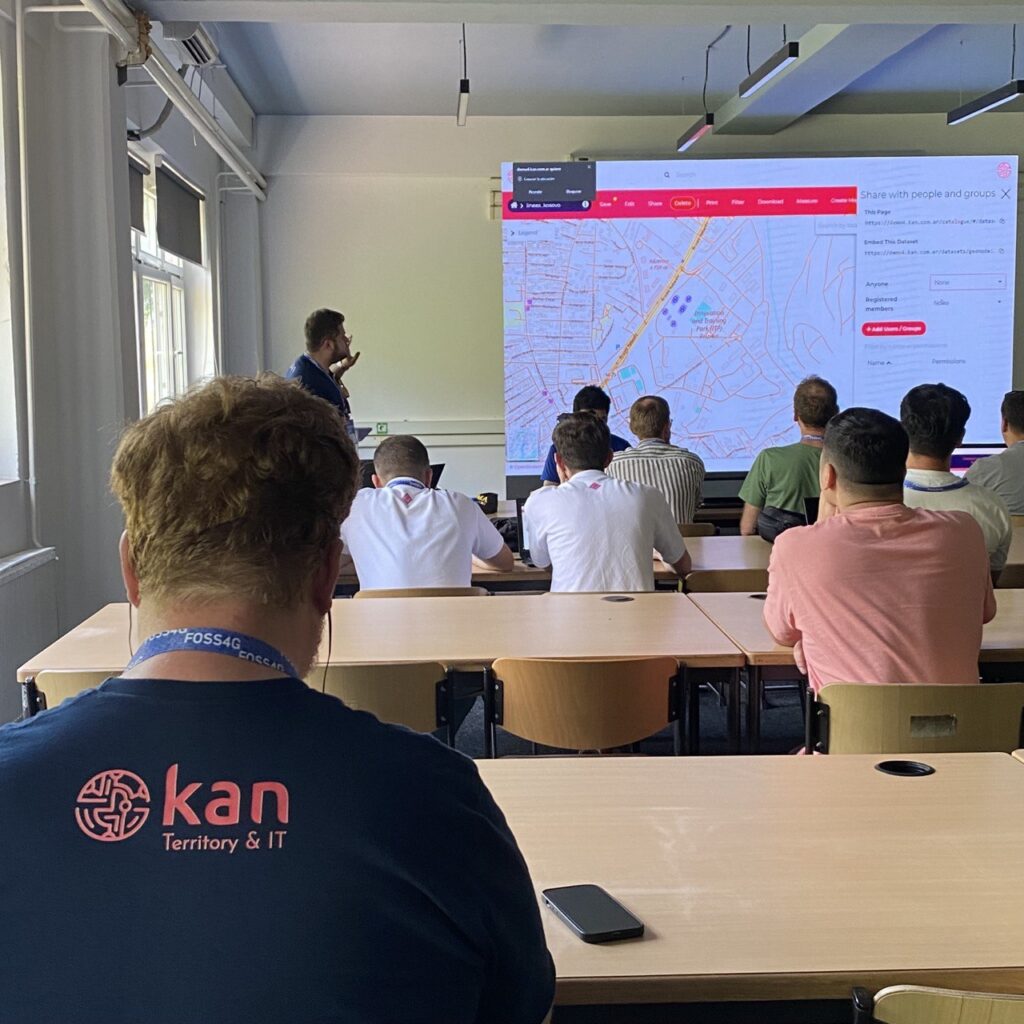
CharlasImplementación de Geoportales Estadísticos en América Latina y el Caribe
A partir de la implementación del Marco Geoespacial y Estadístico Global (GSGF) propuesto por la ONU e implementado en América Latina y el Caribe por la Comisión Económica para América Latina y el Caribe (CEPAL), se desarrollaron un conjunto de componentes tecnológicos específicos, tales como geoportal, gestor estadístico y API con posibilidad de consumir información de diferentes aplicaciones. Al mismo tiempo, se implementaron componentes ya existentes en la comunidad como Kobo Toolbox, GeoNode, Airflow, MapLibre, Nominatim y Metabase para la integración de la información desde la recolección en el territorio hasta la publicación de los datos. El proyecto se realizó inicialmente con un grupo de países: Argentina, Paraguay, Honduras, Guatemala, República Dominicana, Costa Rica y Ecuador.
[Caso de uso] Implementación Digital Twin City en MapLibre con la integración de diferentes fuentes de información
Caso de uso para la implementación de una plataforma que soporte datos que contribuyan a la publicación y gestión de Gemelos Digitales, basada en el uso de MapLibre como visor web y al mismo tiempo consumiendo información de diferentes fuentes geoespaciales, incluyendo Mesh, Raster, DEM y fuentes de datos casi en tiempo real como OneBusWay u OpenTripPlanner basadas en formatos GTFS, para la comparación y análisis de la información.
[Caso de uso] Automatización de Kobo Toolbox con GeoNode para la gestión de riesgos
A partir de la implementación de un conjunto de formularios en Kobo Toolbox se creó un flujo de información para la Comisión de Manejo de Incendios de la República Argentina para poder integrar desde campo los reportes de incendios (on line/off line) de manera sencilla y sus diferentes etapas de evolución. La automatización de la ingesta a un GeoNode como gestor de datos geoespaciales permite la integración con datos de previsión meteorológica, información casi en tiempo real, incidencias de incendios, detección de puntos calientes e índices predictivos de incendios.
La automatización e integración se realiza con la herramienta Airflow, que garantiza el seguimiento de los flujos de información, simplificando el proceso durante las incidencias.
Gobernanza de datos con OpenMetadata Integrando servicios OGC – CSW
La plataforma OpenMetadata facilita la creación, integración y administración de metadatos proporcionando una estructura unificada para describir y clasificar los datos, permitiendo gestionar su acceso y su publicación. Lo que compartimos aquí es la adaptación de una de las fuentes de datos a servicios OGC – CSW para que diferentes sistemas y aplicaciones puedan consumir los metadatos catalogados de forma transparente, facilitando la gestión y aprovechamiento de la información geoespacial.
Esperamos que les haya resultado útil toda esta información. No duden en consultarnos y dejarnos sus comentarios ¡queremos leerlos! Muchas gracias por su apoyo.
-
sur GeoServer Team: GeoServer 2.23.2 Release
Publié: 21 July 2023, 2:00am CEST
GeoServer 2.23.2 release is now available with downloads ( bin, war, windows) , along with docs and extensions.
This is a stable release of GeoServer recommended production use. GeoServer is made in conjunction with GeoTools 29.2, and GeoWebCache 1.23.1.
Thanks to Ian Turton for making this release.
New Security > URL Checks pageThis release adds a new Check URL facility under the Security menu. This allows administrators to manage OGC Service use of external resources.

For information and examples on how to use the URL Check page, visit user guide documentation.
Release notesNew Feature:
- GEOS-10949 Control remote resources accessed by GeoServer
- GEOS-10992 Make GWC UI for disk quota expose HSQLDB, remove H2, automatically update existing installations
Improvement:
- GEOS-10973 DWITHIN delegation to mongoDB
- GEOS-11048 Improve URL checking
Bug:
- GEOS-10874 Log4J: Windows binary zip release file with log4j-1.2.14.jar
- GEOS-10875 Disk Quota JDBC password shown in plaintext
- GEOS-10901 GetCapabilities lists the same style multiple times when used as both a default and alternate style
- GEOS-10903 WMS filtering with Filter 2.0 fails
- GEOS-10906 Authentication not sent if connection pooling activated
- GEOS-10932 csw-iso: should only add ‘xsi:nil = false’ attribute
- GEOS-10936 YSLD and OGC API modules are incompatible
- GEOS-10964 Support virtual services for OSEO/STAC
- GEOS-10980 CSS extension lacks ASM JARs as of 2.23.0, stops rendering layer when style references a file
- GEOS-10981 Slow CSW GetRecords requests with JDBC Configuration
- GEOS-10982 Wicket bug when trying to add new Vector Attribute (build 2.23 on Tomcat/Windows)
- GEOS-10993 Disabled resources can cause incorrect CSW GetRecords response
- GEOS-10994 OOM due to too many dimensions when range requested
- GEOS-10997 GetCapabilities broken when using Data Security Layer groups
- GEOS-10998 LayerGroupContainmentCache is being rebuilt on each ApplicationEvent
- GEOS-11015 geopackage wfs output builds up tmp files over time
- GEOS-11024 metadata: add datetime field type to feature catalog
- GEOS-11025 projection parameter takes no effect on MongoDB Schemaless features WFS requests
- GEOS-11026 ClassNotFoundException: org.h2.driver on shutdown
- GEOS-11033 WCS DescribeCoverage ReferencedEnvelope with null crs
- GEOS-11035 Enabling OSEO from Workspace Edit Page Results in an NPE
- GEOS-11036 The OAuth2/OIDC security filters do not work as expected anymore after the spring-security-core depencency update to 5.7.8
- GEOS-11046 Styles using the custom mark
shape://dotdon’t draw any fill - GEOS-11054 NullPointerException creating layer with REST, along with attribute list
- GEOS-11055 Multiple layers against the same ES document type conflict with each other
- GEOS-11060 charts and mssql extension zips are missing the extension
- GEOS-11069 Layer configuration page doesn’t work for broken SQL views
Task:
- GEOS-10987 Bump xalan:xalan and xalan:serializer from 2.7.2 to 2.7.3
- GEOS-10988 Update spring.version from 5.3.26 to 5.3.27 and spring-integration.version from 5.5.17 to 5.5.18
- GEOS-11008 Update sqlite-jdbc from 3.34.0 to 3.41.2.2
- GEOS-11010 Upgrade guava from 30.1 to 32.0.0
- GEOS-11011 Upgrade postgresql from 42.4.3 to 42.6.0
- GEOS-11012 Upgrade commons-collections4 from 4.2 to 4.4
- GEOS-11018 Upgrade commons-lang3 from 3.8.1 to 3.12.0
- GEOS-11020 Add test scope to mockito-core dependency
- GEOS-11062 Upgrade [httpclient] from 4.5.13 to 4.5.14
- GEOS-11063 Upgrade [httpcore] from 4.4.10 to 4.4.16
- GEOS-11067 Upgrade wiremock to 2.35.0
For the complete list see 2.23.2 release notes.
About GeoServer 2.23 SeriesAdditional information on GeoServer 2.23 series:
-
sur GeoTools Team: GeoTools 29.2 Released
Publié: 20 July 2023, 12:48pm CEST
The GeoTools team are pleased to announce the release of the latest stable version of GeoTools 29.2 geotools-29.2-bin.zip geotools-29.2-doc.zip geotools-29.2-userguide.zip geotools-29.2-project.zip This release is also available from the OSGeo Maven Repository and is made in conjunction with GeoServer 2.23.2. We are grateful to Ian Turton (Astun Technology Ltd) for carrying out -
sur Jackie Ng: Announcing: mapguide-react-layout 0.14.9
Publié: 19 July 2023, 12:50pm CEST
Our journey needed to make a temporary detour, with another release of mapguide-react-layout.
This release has the following notable changes
Legend layer and group customization supportThis release provides a new viewer init option to allow layer and group elements of the Legend component to be augmented with additional HTML content. For example, we can use this to add a download link for specific layers (how to actually implement the download link is an exercise left to you the reader)
See this comment for an example of how to customize the layer and group elements.Reduced excessive re-renderingIn the process of implementing the above feature, we discovered that some components (the Legend component in particular) did a lot of pointless re-rendering which contributes to sluggishness in viewer performance.
For this release, great efforts were made to ensure that component re-rendering is the result of legitimate changes to component state and not from pointless re-rendering from bogus shallow state "changes"
Removed IE-specific polyfills and workaroundsInternet Explorer ceased to be a supported browser by Microsoft for some time now. This release formally removes our various IE-specific workarounds and polyfills that were only there to support this ancient browser.
Other changes- The urlPropsIgnore setting is now considered when the viewer updates the URL state
- The viewer bundle patches OpenLayers to log a console warning and abort rendering when attempting to render a map overlay image with a width/height/scale/dpi of 0
- Fixed an issue where no map images are rendered if the browser zoom is below 100%
Download -
sur Ian Turton's Blog: How much fun was FOSS4g 2023?
Publié: 18 July 2023, 2:00am CEST
Review of FOSS4G 2023 IntroductionFOSS4G 2023 was held in Prizren, Kosovo and there were 800+ attendees from 120+ countries. This was a great attendance despite Kosovo not being the easiest place to get to, especially if you were me. I had booked flights to and from Belgrade, Serbia because they were a relatively good times for me (I am missing being only 1 hour from a London airport). It looked like an easy 4 hour drive from the airport to Prizren. Then about a fortnight before the conference Kosovo closed it border to Serbian registered cars! A subsequent check all showed that most of the hire companies wouldn’t let you drive one of their cars over a border (and apparently despite the Serbian Government’s claims they considered Kosovo a separate country). So I fell back on the 9 hour overnight bus trip, which wasn’t as bad as it could have been but did mean I started the conference already somewhat sleep deprived.
Sort of Historical Side NoteWhen I was at school learning Geography all of this area was called Yugoslavia and it was behind an “iron curtain” so we knew little about it and cared even less (it was not on the exam). In history it was covered by the break up of the Ottoman Empire and the meddling of Bismarck as an “honest broker” at the 1878 Congress of Berlin (as I recall he rigged the Balkans in such a way as to start World War I, but history O-Level was a long time ago). So you can already see that there is a long a complex history and geography in the region. It became more complex in the 1990s when Yugoslavia broke up in a series of bloody conflicts, which I remember from the evening news. Kosovo only really came to my attention in 2008 when I was walking through New York with James Macgill and his kids and we saw a large group of cars flying large red flags with double headed eagles on them (and the one thing I retained from my history lessons is the ability to spot a double headed eagle at 200 metres). These were Kosovans celebrating the declaration of independence being proclaimed.

So squabbling about car number plates was pretty peaceful really. Fortunately, for us most of KFOR (the UN/Nato peace keeping force) had gone home, except for some in the Northern predominately Serb areas where they were out keeping the piece over disputed elections for city mayors. This meant we could use their old base as a conference venue, which was great except for the lack of lifts.
Cool talksThis is a list of talks I found particularly interesting or fun and that stuck in my mind long enough to remember for this post. There were lots of great talks that I either failed to see because the room was too full or was too hot for my brain to have taken in the details, so I’m looking forward to the videos coming out so I can refresh my memory later.
- Neiene Boeijen Let’s put it on the map!
- Interesting discussion on why graphic designers shouldn’t make maps and geographers shouldn’t design user interfaces
- Benjamin Trigona-Harany Aircraft trajectory analysis using
PostGIS
- Explains how PostGIS handles trajectories which are really just a
LinestringwithMZvalues on the points whereMincreases along the line - We can create a foreign table based on a foreign “server” that converts to a REST API call in the background this allows real time mapping filtered by the bounds of the map and any other filters the API can handle.
- Explains how PostGIS handles trajectories which are really just a
- Jody Garnett and Andrea Aime GeoServer used in fun and interesting
ways & State of
GeoServer
- As usual Andrea and Jody were presenting way too many talks including this useful review of what GeoServer is capable of in production and a review of new features in GeoServer for this year.
- Iván Sánchez Ortega Gleo
- I was going to say this is a new WebGL mapping library, but apparently Iván has been going on about this
for 8+ years now. Any way there is lots of object orientated style javascript code in there so you can
extend your semi-transparent markers with bouncing. I don’t think it’s quite cool enough for me to start
learning JavaScript or WebGL but the demo with 10,000 randomly coloured bouncing map markers is fun in a
<blink>sort of way.
- I was going to say this is a new WebGL mapping library, but apparently Iván has been going on about this
for 8+ years now. Any way there is lots of object orientated style javascript code in there so you can
extend your semi-transparent markers with bouncing. I don’t think it’s quite cool enough for me to start
learning JavaScript or WebGL but the demo with 10,000 randomly coloured bouncing map markers is fun in a
- Sanghee Shin Let’s defense my country using FOSS4G!
- Discussed how South Korea is modernising its military mapping with GeoServer, PostGIS, Cesium and OpenLayers, which makes me feel better about knowing North Korea is using GeoServer and PostGIS too.
- Andrea Aime Processing and publishing Maritime AIS data with GeoServer and Databricks in
Azure
- Andrea standing in for Nuno discussed how to handle 1.5 Billion records in GeoServer. Looking at the AIS ship location data over 7 years at second intervals (I think) and how you could get GeoServer to display the relevant data in a fast way.
- Logan Williams Investigating war crimes, animal trafficking, and more with open source geospatial
data
- Logan is a Bellingcat reporter who uses open source tools to look at open source data to help confirm stories. For example he described how they looked at tracking a GRAD missile launcher from Russia to Ukraine before Malaysian Airliner was shoot down. This included spotting scuffs on the road and distinctive power lines in posted dash camera footage of the convoy.
- What ever you do don’t play GeoGuesser against these guys as they are going to be very good.
- Neiene Boeijen Let’s put it on the map!
-
sur PostGIS Development: PostGIS 3.4.0beta1
Publié: 14 July 2023, 2:00am CEST
The PostGIS Team is pleased to release PostGIS 3.4.0beta1! Best Served with PostgreSQL 16 Beta2 and GEOS 3.12.0.
This version requires PostgreSQL 12 or higher, GEOS 3.6 or higher, and Proj 6.1+. To take advantage of all features, GEOS 3.12+ is needed. To take advantage of all SFCGAL features, SFCGAL 1.4.1+ is needed.
3.4.0beta1This release is a beta of a major release, it includes bug fixes since PostGIS 3.3.3 and new features.
-
sur GeoTools Team: Construction Ahead: Refactoring org.opengis to org.geotools.api
Publié: 11 July 2023, 8:51pm CEST
In the next release of GeoTools 30.0 there are some breaking API changes to look forward to:org.opengis package is renamed to org.geotools.api packageThis release will include update instructions, and a migration script, to fix your code.This is a breaking change, the formal change control proposal is here.Why is this changingThe GeoAPI Implementation Specification is a Java standard (Interfaces -
sur gvSIG Team: Geoportal del Instituto Nacional de Estadística de Uruguay
Publié: 11 July 2023, 7:29am CEST

El INE de Uruguay también está utilizando gvSIG Online para publicar una serie de información estadística. La capacidad para interpretar la información estadística aumenta significativamente cuando lo hacemos de un modo espacial.
En el Geoportal del INE podemos acceder, por ejemplo, a información como la evolución histórica de la población por departamentos desde 1963 hasta 2011, año del último censo. Por cierto, este año se inicia la actualización del censo… para lo que también tendrá una especial importancia el proyecto realizado con la Suite gvSIG para disponer de un Sistema Único de Direcciones.
Mediante el geoportal disponible podemos consultar el censo de población, el de hogares y el de viviendas por departamentos, secciones, segmentos, zonas o localidades. Ver la representación cartográfica de indicadores de actividad inmobiliaria, como las altas de compraventas por tipo de propiedad por departamento o precios de alquiler en Montevideo. También hay accesible información como la tasa de actividad, empleo y desempleo, así como capas complementarias con información de unidades geoestadísticas, infraestructuras y servicios.
Enlace: Geoportal INE
-
sur gvSIG Team: Optimizando el trabajo con datos en gvSIG Desktop: Tutorial para pasar de shapefile a base de datos H2Spatial.
Publié: 10 July 2023, 7:37am CEST
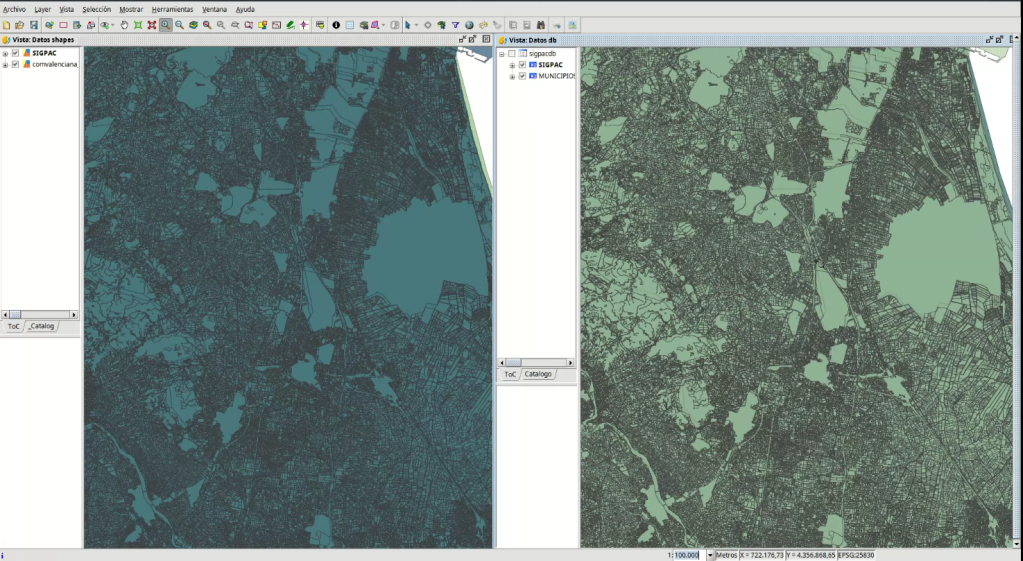
Si queréis optimizar vuestro trabajo a la hora de trabajar con información geográfica… no os perdáis este vídeo, sobretodo si manejáis capas de información grandes, con cientos de miles o millones de registros, lo que siempre da problemas de velocidad a la hora de hacer zooms, desplazamientos, etc.
Lo que os vamos a mostrar es cómo cambia de manera exponencial la velocidad de trabajo de tener nuestros datos en un formato como el shapefile a hacerlo con una base de datos espacial. H2 es una base de datos ligera, muy fácil de usar y que en nuestro caso va directamente incluida en gvSIG Desktop, por lo que no requiere ninguna instalación. Se basa en ficheros, por lo que distribuir una base de datos de H2 es tan sencillo como compartir un determinado fichero.
En el ejemplo que se muestra en el vídeo vamos a trabajar con una capa del denominado SIGPAC (una especie de Catastro agrícola) de la provincia de Valencia y que contiene aproximadamente 2 millones de registros.
Hemos decidido no cortar el vídeo para que veáis que lo único que demora es el paso inicial de exportar el shapefile a la base de datos, por lo que podéis ver hasta el minuto 2:20 y luego pasar al minuto 17, donde ya tenemos la misma información en ambos formatos y se realiza la comparativa en sí. Vuestros problemas para manejar volúmenes de datos grandes, sin requerir instalar nada adicional a vuestro SIG de escritorio… ya se han resuelto.
-
sur Paul Ramsey: MapScaping Podcast: Pg_EventServ
Publié: 8 July 2023, 2:00am CEST
Last month I got to record a couple podcast episodes with the MapScaping Podcast’s Daniel O’Donohue. One of them was on the benefits and many pitfalls of putting rasters into a relational database, and the other was about real-time events and pushing data change information out to web clients!
TL;DR: geospatial data tends to be more “visible” to end user clients, so communicating change to multiple clients in real time can be useful for “common operating” situations.
I also recorded a presentation about pg_eventserv for PostGIS Day 2022.
-
sur gvSIG Team: Working with Enumerations in gvSIG Online (and gvSIG Mapps)
Publié: 7 July 2023, 7:21am CEST

Among the many tools available to gvSIG Online users, there are those related to enumerations. These types of functionalities are extremely useful for data maintenance, as they allow us to define the possible values for a field. They become even more useful when using gvSIG Mapps integrated with gvSIG Online, as when capturing or updating information using the mobile application, these fields will display dropdown menus for easily selecting the corresponding value for each recorded element.
Enumeration lists can be added, modified, or deleted from the administration area of gvSIG Online. We can create a list from scratch or instruct gvSIG Online to automatically generate it based on the unique values available in that field. Interesting, right?
Once an enumeration is created, we can also assign it to other fields in other layers. Even more interesting, isn’t it?
When editing a published layer in a project, these fields will display a dropdown menu with the elements that make up the list, and one of them can be selected to assign it as an attribute of a map element, if it is of type “enumeration,” or multiple elements if it is of type “multiple enumeration.”
And, as we mentioned earlier, in gvSIG Mapps, we would automatically have our dropdown menus ready to facilitate data collection in the field.
-
sur gvSIG Team: Trabajar con enumeraciones en gvSIG Online (y gvSIG Mapps)
Publié: 6 July 2023, 7:55am CEST
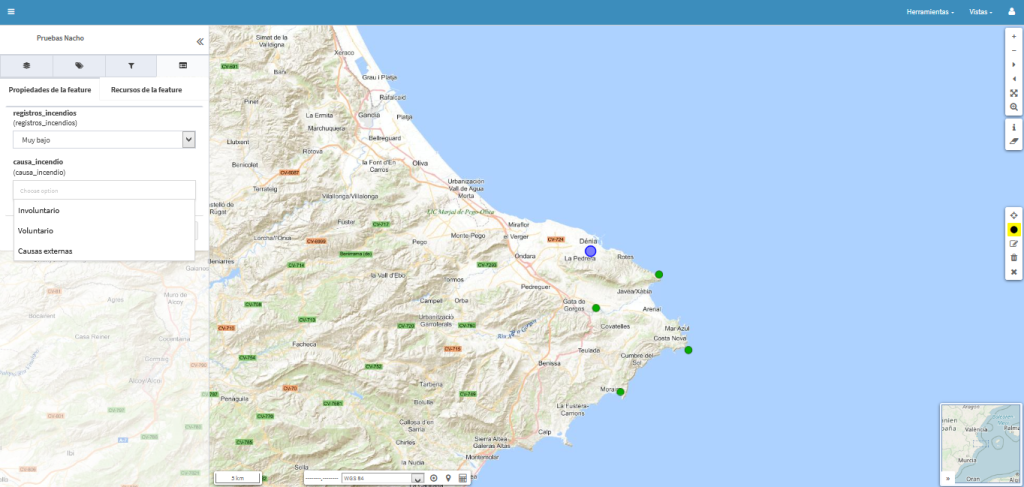
Entre las muchas herramientas que los usuarios de gvSIG Online tienen disponibles se encuentran las relacionadas con enumeraciones. Este tipo de funcionalidades son extremadamente útiles para el mantenimiento de los datos, ya que nos permiten definir los valores posibles de un campo. Doblemente útil si utilizamos gvSIG Mapps integrado con gvSIG Online, ya que a la hora de capturar o actualizar información con la aplicación móvil, en esos campos se nos mostrarán desplegables para elegir fácilmente el valor que corresponde a cada elemento relevado.
Los listados de enumeraciones se pueden añadir, modificar o eliminar desde el área de administración de gvSIG Online. Podemos crear un listado desde cero o bien decirle a gvSIG Online que lo genere automáticamente a partir de los valores únicos disponibles en ese campo. ¿Interesante, verdad?.
Una vez creada una enumeración también podemos asignársela a otros campos de otras capas. ¿Más interesante aún, no?
Cuando se inicie la edición de una capa publicada en un proyecto, en estos campos se desplegarán el listado con los elementos que conforman el listado y se podrá seleccionar uno de ellos para asignarlo como atributo de un elemento del mapa,si es del tipo «enumeración», o varios si es de tipo «enumeración múltiple».
Y, como ya hemos comentado, en gvSIG Mapps tendríamos automáticamente nuestros desplegables listos para facilitar la toma de datos en campo. -
sur Geomatic Blog: Retiring geomaticblog.net
Publié: 6 July 2023, 2:00am CEST

Vicente, Pedro-Juan, and me started this blog in 2006. Back then blogs were the best way to create content and share knowledge. It was the times of RSS, Google Reader, social bookmarking through
del.icio.us, and pictures onFlickr. Very different from these days of micro-blogging, quick videos, influencers moving from one platform to another chasing their viewers' attention and money, newsletters under paywalls, etc.We stayed for a few months in a self-hosted Drupal CMS but maintaining it was a pain, so we moved to a managed Wordpress where we lived most of the time. Wordpress offered an excellent balance to get us writing without much hassle, keeping our domain, and very infrequent ads. Finally, last year I migrated the content to Hugo, a static generator, to save some costs, but the decline in writing started in 2018, so it is OK to close this project formally.
I will keep the blog code and content on a GitHub repository at [https:]] where we have posts in Markdown since 2007, and everything is hopefully for ever available in the web archive at [https:]] . I will probably copy my posts to my website.
Needless to say that we are forever grateful to those that encouraged us to write here. I had a lot of fun maintaining the website and writing content for everyone else. We are easy to find on the Internet, so please contact us anytime!
Have fun!
-
sur gvSIG Team: Curso – Concurso Geoalfabetización mediante la utilización de Tecnologías de la Información Geográfica
Publié: 5 July 2023, 6:19pm CEST
Compartimos información sobre la nueva edición del Curso-Concurso de gvSIG Batoví

¡Vamos por el sexto año!
El Curso – Concurso Geoalfabetización mediante la utilización de TIGs se desarrollará entre el 5 de julio y el 8 de diciembre. Este año la iniciativa fue seleccionada por el Programa de Asistencia Técnica 2023 del Instituto Panamericano de Geografía e Historia, que prevé extender la experiencia desarrollada en Uruguay a otros países de la región: Chile y Colombia.
La iniciativa consta de 2 partes: primero: un curso denominado Tecnologías de la Información Geográfica y gvSIG Batoví dirigido a docentes de enseñanza media de Geografía y áreas relacionadas con el conocimiento geográfico, ambiental y social. La capacitación se desarrollará del 31 de julio al 18 de agosto en modalidad b-learning (plataforma + taller por videoconferencia).
Se entregará una certificación avalada por las instituciones organizadoras del curso, en la cual se reconocerá la participación satisfactoria de los cursillistas en la capacitación brindada (30 horas) y en…
View original post 223 more words
-
sur gvSIG Team: Geoportal del Instituto Nacional de Vitivinicultura del Uruguay
Publié: 5 July 2023, 7:48am CEST
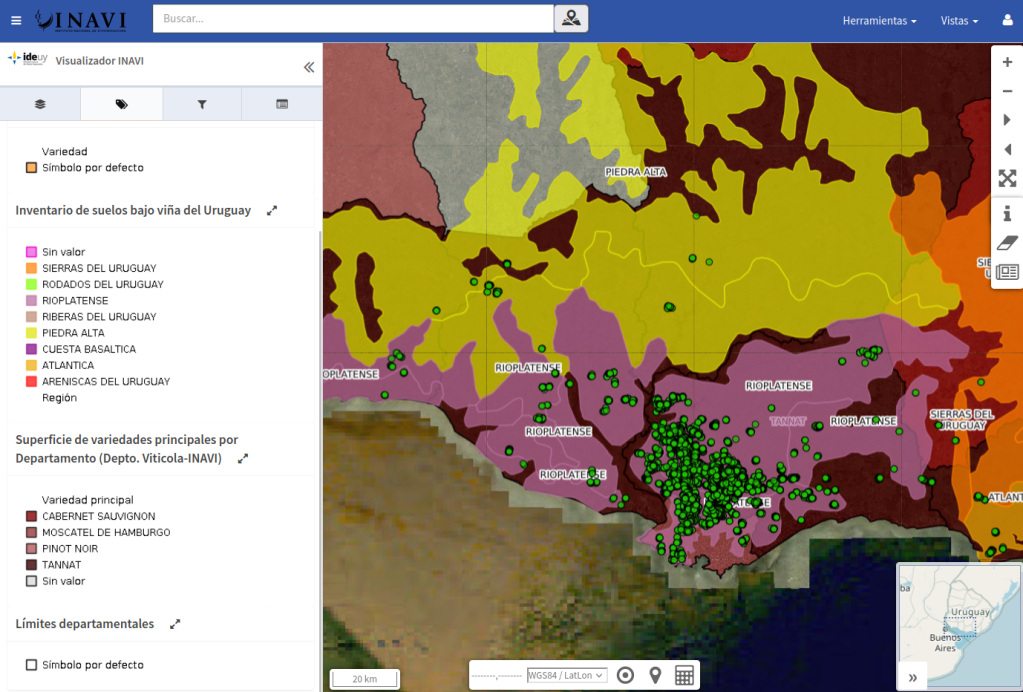
Otro de los Geoportales que utilizan el gvSIG Online implantado para la Infraestructura de Datos Espaciales del Uruguay es el creado por el INAVI, el Instituto Nacional de Vitivinicultura.
El Geoportal permite cruzar la información del INAVI con otras cartografías del país mantenidas por otras entidades, como la hidrografía (IDEuy), las redes de transporte (MTOP), el Catastro (DNC), etc.
En cuanto a los datos compartidos por el INAVI podemos encontrar capas como puntos de control, cuadros de cultivos, inventario de suelos bajo viña, superficie de vid implantada por departamento…
Sin más, compartimos el enlace por si queréis explorar este Geoportal: [https:]]
Por cierto, en la temática de vitivinicultura estamos desarrollando un proyecto de gran relevancia y complejidad para la Generalitat Valenciana, pero eso os lo contaremos otro día.
-
sur GeoCat: FOSS4G 2023
Publié: 4 July 2023, 12:36pm CEST
Wow what an adventure, Jody Garnett here returning from visiting FOSS4G conference and the GeoCat offices.
FOSS4G for the PeopleThe Free and Open Source Software for Geospatial conference was very much a community affair this year. FOSS4G 2023 was a chance to meet and speak with peers from the GeoNetwork and GeoServer projects and connect with companies and the B2B activity.
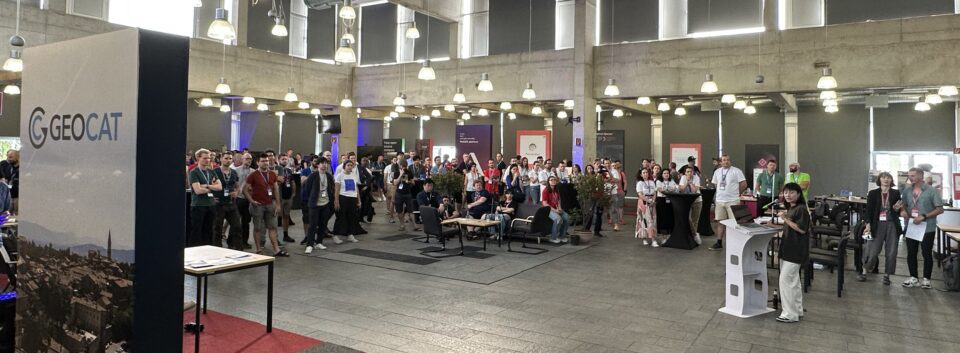
Indeed GeoCat attended with a booth, and a few things to hand out, and conversation. Our booth was near the speakers, so we would sneak over and turn down the music so we could talk. And we talked a lot – so many nice people! With all the talking I do not beleive I opened my laptop to show off our products once the entire week.
It was a pleasure seeing Jeroen and Florent comfortable on the massive stage providing an 1:250k scale overview of GeoNetwork activities.
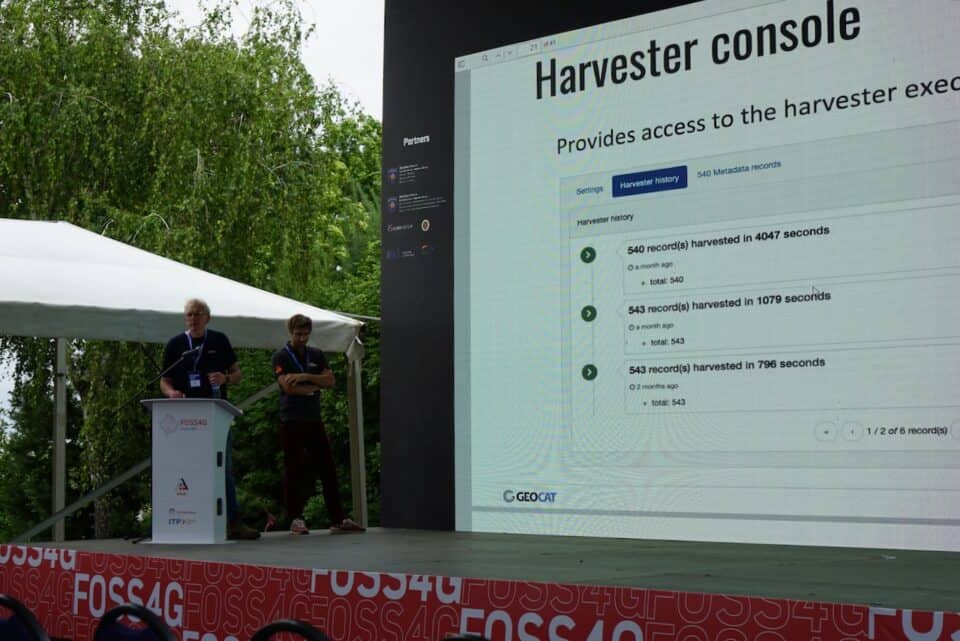
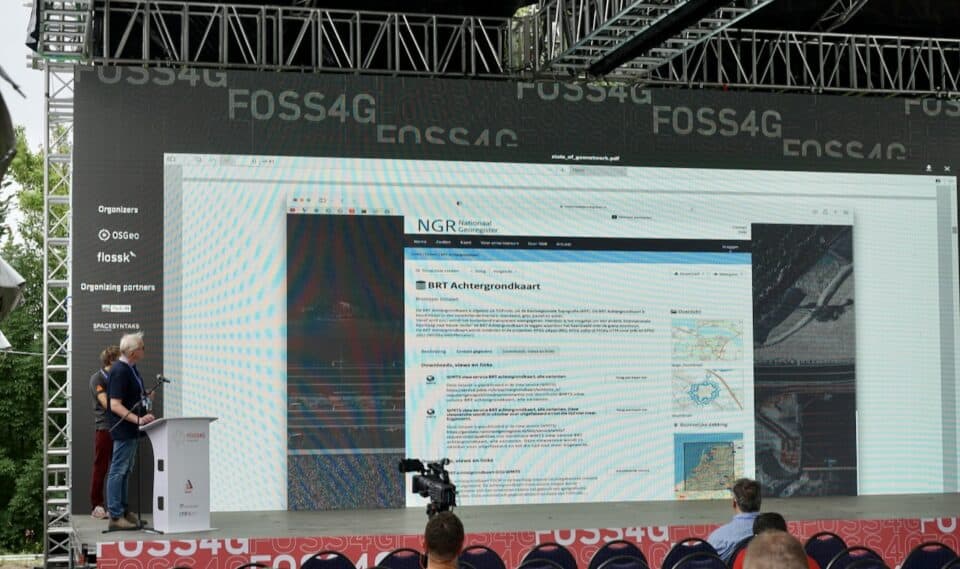
I had a good workshop on GeoServer with Ian Turton to start, and some entertaining presentations with Andrea over the course of the week. The GeoServer Feature Frenzy and GeoServer used in fun and interesting ways were real highlights with great audience response.
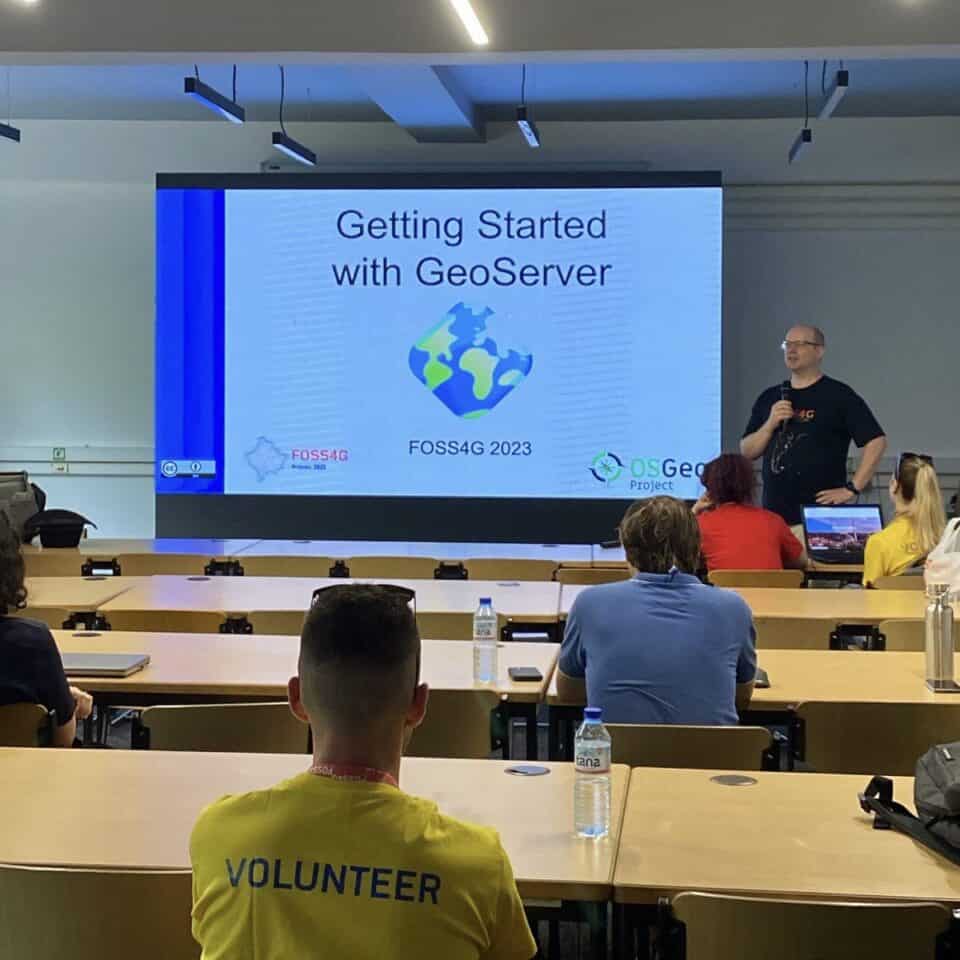
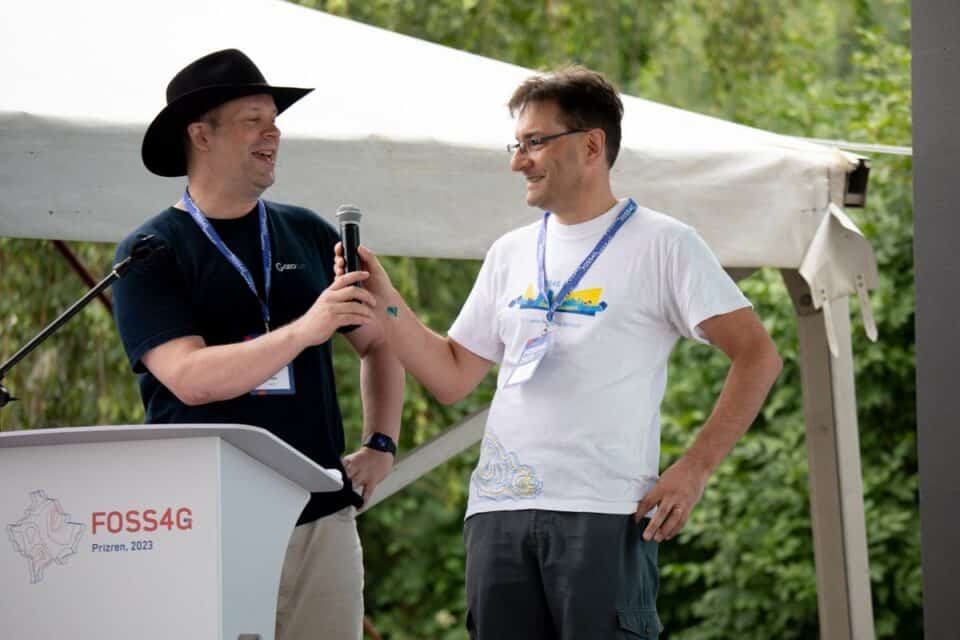
Photos by Jody Garnett and FOSS4G CC-by-A
Presentations:
- State of GeoNetwork
- GeoNetwork Orientation
- GeoServer Feature Frenzy 2023
- State of GeoServer 2.23
- GeoServer Orientation
- GeoServer used in fun and interesting ways
- Getting Started with GeoServer (Workshop)
This year I only had one outreach presentation, on the topic of OSGeo values, with Tom.
With the conference hosted by OSGeo and the FLOSSK regional open source group it appeared attendees were already comfortable with open source as a concept. However OSGeo values go a bit further than just a license – looking at a project’s sustainability and other risk factors also.
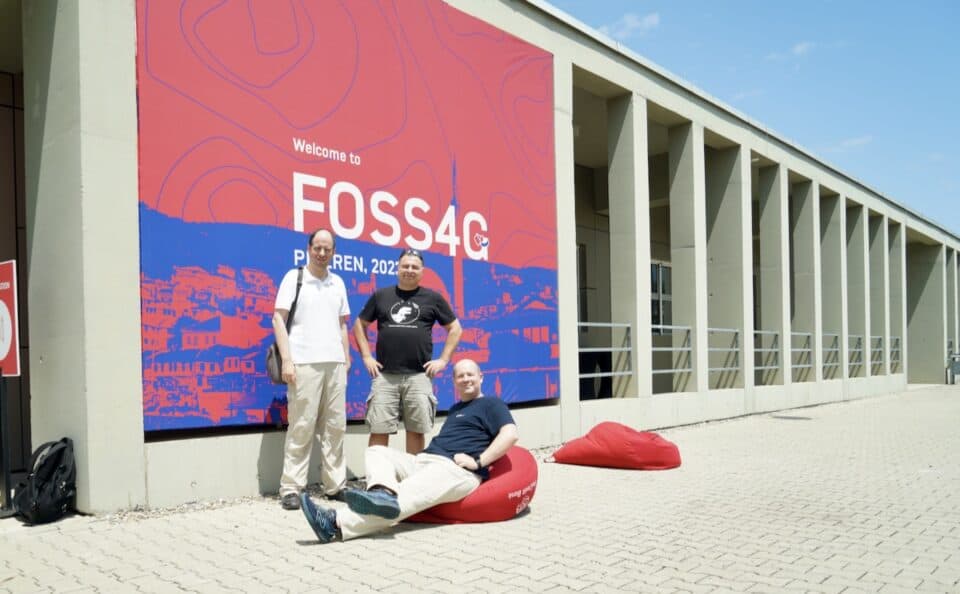
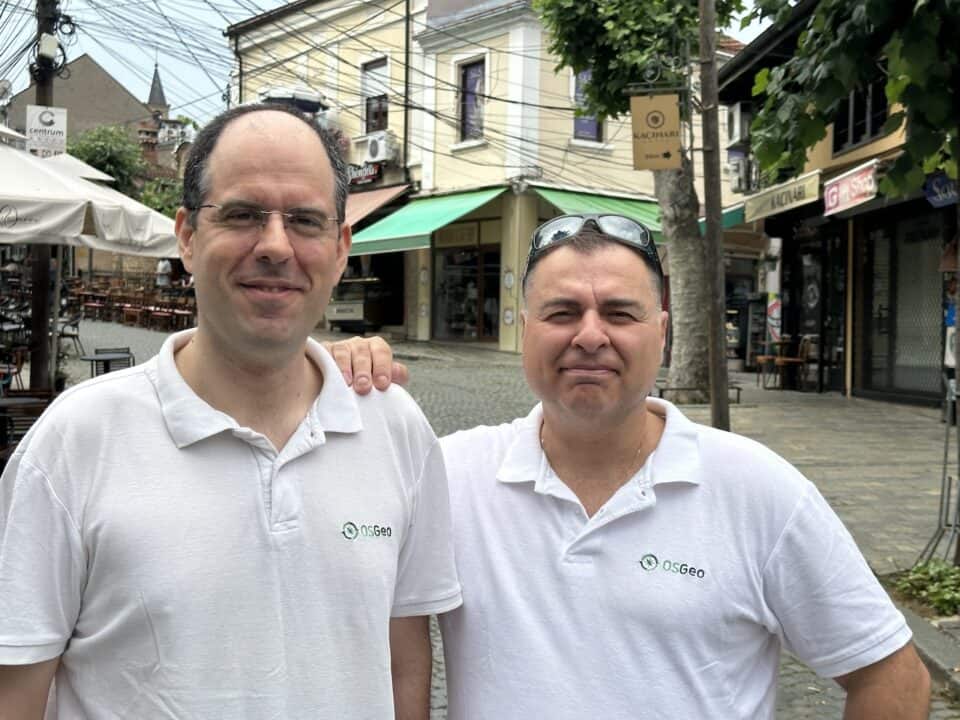
Presentation:
GeoCat BennekomIt is always a pleasure to visit the GeoCat office, and customers, in the Netherlands. Everyone was full of ideas and opportunities, and pushing hard on GeoCat Bridge for ArcGIS.
The office garden is amazing, exploring outside of the village showed a landscape surprisingly dry from a regional drought.
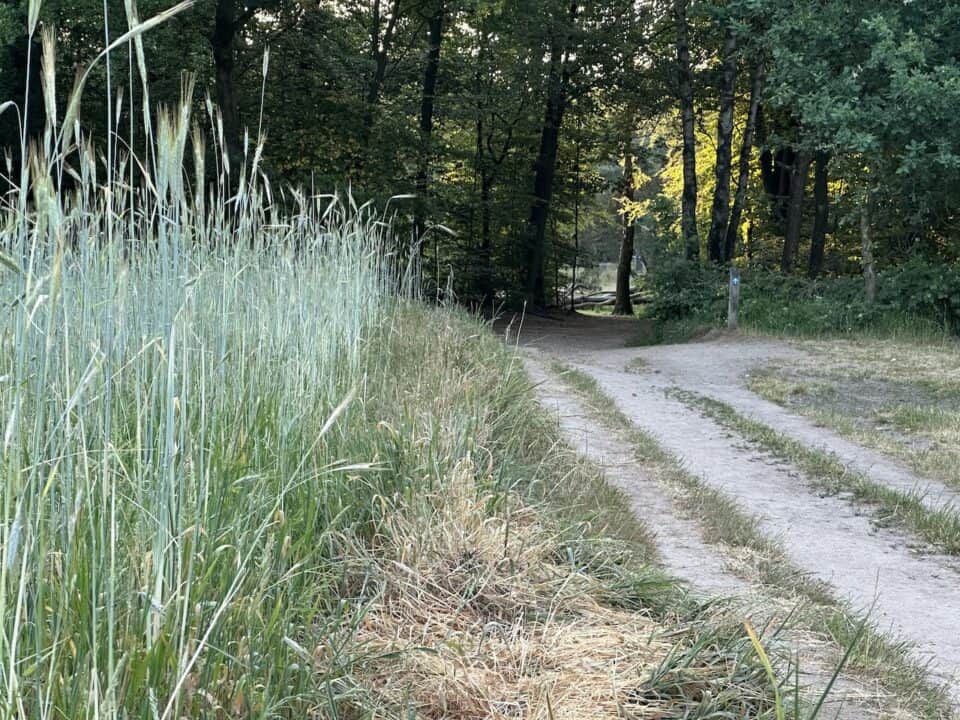
 Coming soon
Coming soon
The next activity GeoCat is attending is the Bolsena Code Sprint. Please consider yourself invited!
There are number of regional foss4g events coming up and we look forward to more opportunities for advocacy and meeting new customers.
The post FOSS4G 2023 appeared first on GeoCat B.V..
-
sur gvSIG Team: Inventario turístico georreferenciado del Pla de Mallorca adaptado a la Normativa (UNE 178503)
Publié: 4 July 2023, 7:57am CEST

Como parte de uno de los proyectos que estamos abordando con la Suite gvSIG, la IDE turística de la Mancomunidad del Pla de Mallorca, hemos realizado un inventario turístico en el que se ha partido de datos existentes y se ha realizado labor de toma de datos en campo (con gvSIG Mapps). La novedad de dicho inventario es que es pionero en la adopción de la Norma UNE 178503 para representar las distintas capas de datos georrefenciados.
La UNE 178503:2022 “Semántica aplicada a destinos turísticos inteligentes”, define una semántica base que permite representar la información relevante en la que se conforma el destino turístico (destino turístico, recursos turísticos dentro del destino, experiencias de viaje), asegurando la interoperabilidad de sus plataformas turísticas y de la ciudad y el territorio entre sí y con desarrollos de terceros.
Esta adopción de la Norma ha conllevado un trabajo previo de análisis de datos existentes y de la propia Norma permitiendo, entre otras cosas, identificar posibles términos que no están incluidos en la norma UNE 178503:2022 o campos que no aplican a las características de la Mancomunidad. De este modo se ha conseguido una adopción y adaptación a la realidad particular del destino del Pla de Mallorca que ha acabado reflejado en el modelo de datos de la Infraestructura de Datos Espaciales.
Por tanto, este proyecto ha conllevado llevar la interoperabilidad de datos geográficos turísticos un paso más allá, tanto en servicios de acceso (WMS, WMTS. WFS) como en semántica y modelo de datos.
En breve os contaremos más sobre el proyecto y compartiremos la IDE/Geoportal resultante, donde podréis consultar el inventario. Todo ello desarrollado con gvSIG Online para la publicación de datos, gvSIG Mapps para la toma de datos y gvSIG Desktop para el tratamiento de datos.
-
sur SourcePole: FOSS4G 2023 Prizren
Publié: 4 July 2023, 2:00am CEST
FOSS4G is the annual global event of free and open source geographic technologies and open geospatial data hosted by OSGeo. In 2023 it took place in Prizren, Kosovo.
-
sur GeoServer Team: GeoServer at FOSS4G 2023
Publié: 4 July 2023, 2:00am CEST
The GeoServer team was pleased to attend FOSS4G 2023 last week (26 June - 2 July 2023) in Prizren, Kosovo!
FOSS4G 2023 was put on this year by the Open Source Geospatial Foundation (OSGeo) and the regional Free Libre Open Source Software Kosova (FLOSSK) organization. The local organizing committee worked very hard to make everyone feel welcome and well cared for. Thank you for hosting everyone, we had a great time.
GeoServer content:
- State of GeoServer 2.23
- GeoServer Feature Frenzy 2023
- GeoServer used in fun and interesting ways
- GeoServer Orientation
- Getting Started with GeoServer (Workshop)
GeoServer community content:
- FOSS4G 2023 (GeoCat Blog)
- GeoSolutions presence at FOSS4G 2023 in Prizren (Kosovo) (GeoSolutions Blog)
- Many additional presentations featured GeoServer and showcased its capabilities.
When videos are provided of the event we will update this post with links.
FOSS4G Code sprint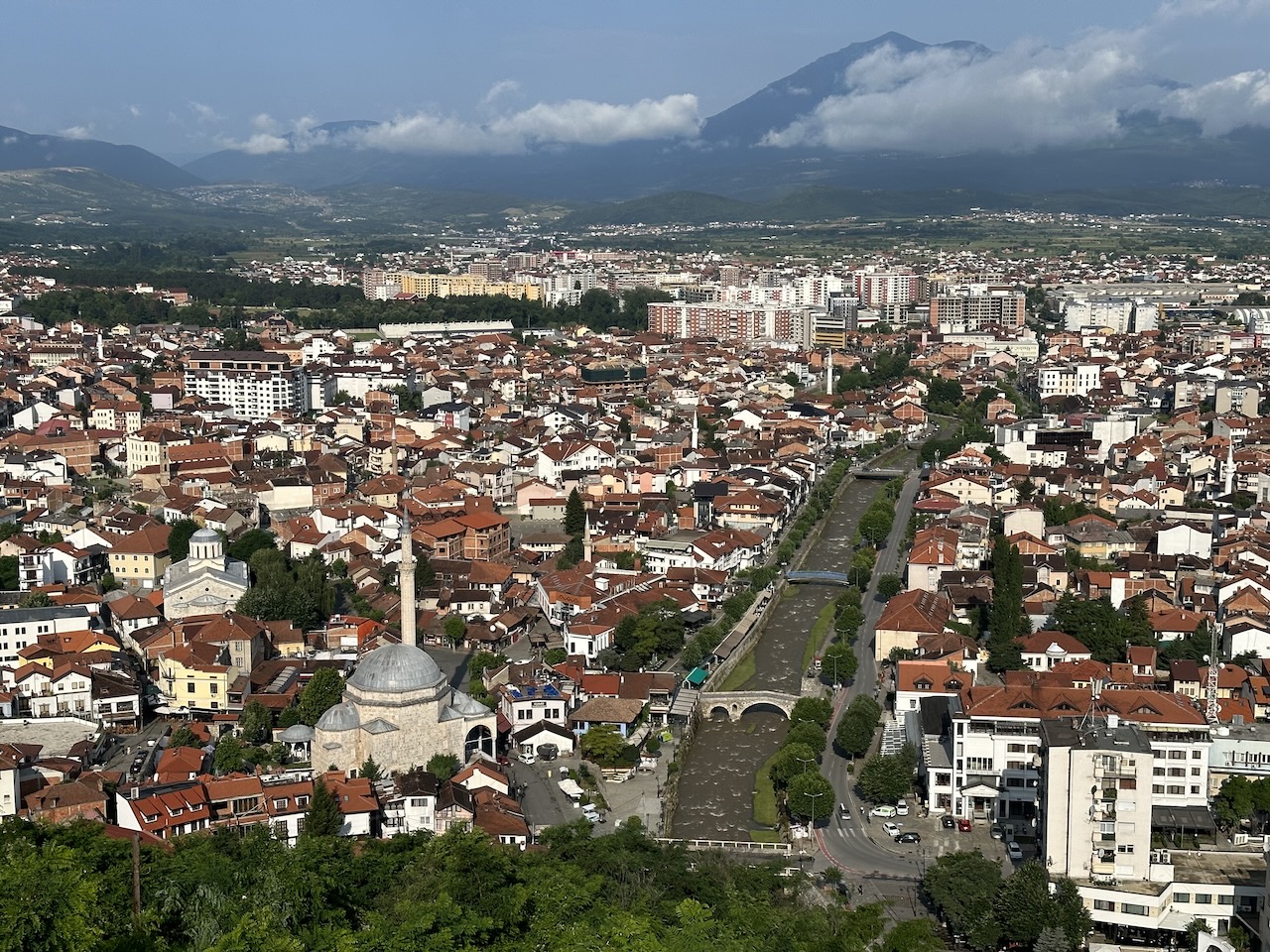
Prizren (Kosovo)We also had our first scheduled codesprint on refactoring org.opengis package. The foss4g sprint was a fact-finding mission to establish the scope of work and confirm time frame and budget.
- The activity was successful in that we were able to change from org.opengis to org.geotools.api and write a script to update GeoWebCache and GeoServer projects.
- GeoServer has some difficulties as gs-printing and gs-geofence-server include the work of external projects which will require assistance.
The work is scheduled for the Bolsena Codesprint 2023 ahead of the GeoServer 2.24.0 release cycle.
For more information see OpenGIS Harmonization at OSGeo. If you are in a position to provide sponsorship, or in-kind participation, this activity could use your support.
-
sur gvSIG Team: Acceso a datos protegidos de Catastro con gvSIG Online
Publié: 3 July 2023, 8:25am CEST
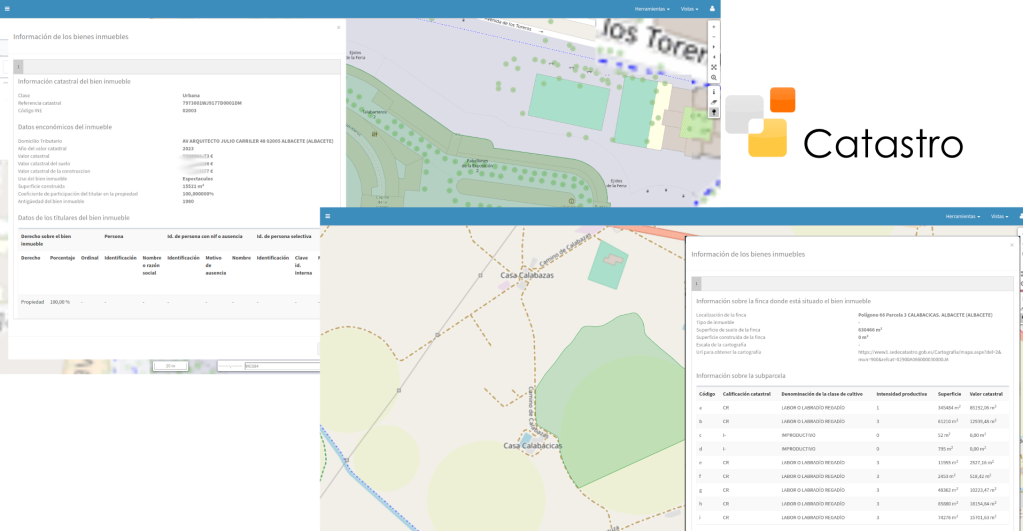
Uno de los desarrollos que se ha realizado para la Infraestructura de Datos Espaciales del Ayuntamiento de Albacete es el relativo a la consulta de datos protegidos de Catastro. Una herramienta innovadora y que gvSIG Online añade a las cada vez más numerosas utilidades que tiene disponibles.
Por supuesto, si hablamos de datos protegidos, a esta funcionalidad solo tendrá acceso el personal del Ayuntamiento que disponga de los permisos correspondientes.
La utilidad y ventaja de esta funcionalidad es fácilmente entendible. Desde cualquier geoportal (de uso interno, claro) que tenga habilitada esta herramienta, una persona con permisos de acceso podrá consultar cualquier parcela – urbana o rústica – y acceder no solo a los datos públicos que proporciona la Sede Electrónica del Catastro sino también a los datos protegidos. Este tipo de consultas son necesarias y habituales en determinados procesos de gestión municipal, especialmente en algunos departamentos como Patrimonio.
Otro motivo más para apostar por gvSIG Online. Y van…
-
sur From GIS to Remote Sensing: Semi-Automatic Classification Plugin v.8 Release Date
Publié: 3 July 2023, 1:15am CEST
I am glad to announce that the new version of the Semi-Automatic Classification Plugin (SCP) for QGIS will be released in October 2023.
This new version will improve the capabilities of SCP, based on a completely new Python processing framework that is Remotior Sensus, developed for image classification, machine learning and GIS spatial analyses.
For any comment or question, join the Facebook group or GitHub discussions about the Semi-Automatic Classification Plugin.
-
sur gvSIG Team: Geoportal de especies exóticas invasoras en Uruguay con gvSIG Online
Publié: 30 June 2023, 8:10am CEST
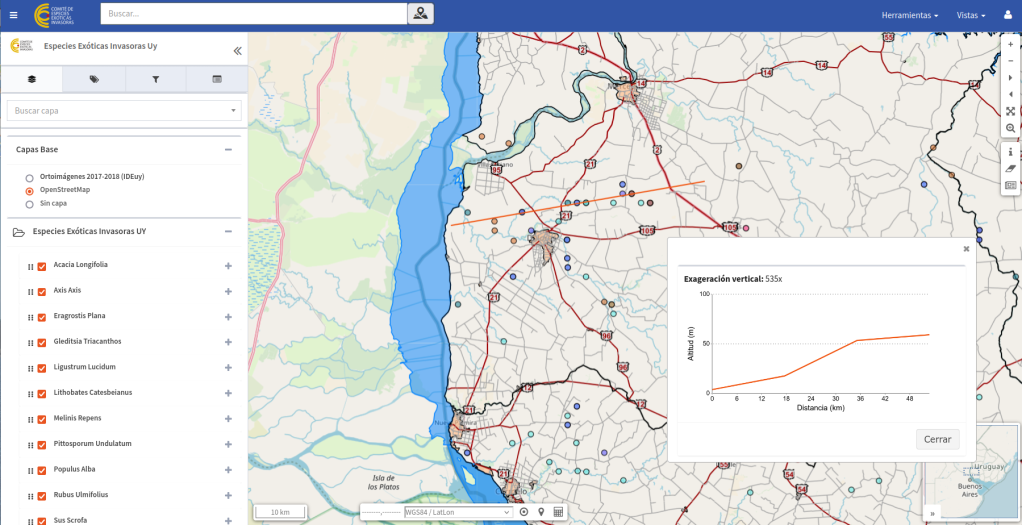
Los que nos vais siguiendo ya tendréis claro que los geoportales realizados con gvSIG Online tienden a infinito. Cada día surgen nuevos geoportales de las numerosas y crecientes organizaciones que lo tienen implementado. Una de las IDE (Infraestructuras de Datos Espaciales) de referencia donde se utiliza gvSIG Online es la de Uruguay. Aunque inicialmente se pensó para utilizarse para un único geoportal, el propio de la IDE que recopila la información básica del país, poco a poco se han ido generando más y más geoportales – unos públicos, otros muchos privados – para gestionar y divulgar información geográfica de todo tipo (catastral, estadística, sanitaria,… ).
Hoy os compartimos uno de los geoportales públicos, en este caso de temática medioambiental, y que permite consultar la distribución de las especies exóticas invasoras en Uruguay. El geoportal cuenta con las principales herramientas ya disponibles en la IDE, algunas de interés para evaluar la distribución de estas especies como es el cálculo de perfiles longitudinales.
Podéis acceder al geoportal aquí: Geoportal
-
sur Marco Bernasocchi: QField background tracking
Publié: 29 June 2023, 11:54am CEST
Years ago, the QField community and its users showed their love for their favourite field app by supporting a successful crowdfunding to improve camera handling.
Since then, OPENGIS.ch has continued to lead the development of QField with the regular support of sponsors. We couldn’t be prouder of the progress we have made, with plenty of new features added in every major release. This includes major improvements to positioning including location tracking, integration of external GNSS receivers through not only Bluetooth but TCP/UDP and serial port connections, accuracy indicator and constraints, and most recently sensors reading to list a few.
We are now calling for the community to help further better QField and unlock an important milestone: background location tracking service.
Pledge now Main goal: background location tracking on Android – 25’000€
Main goal: background location tracking on Android – 25’000€
Currently, QField requires users to keep their devices’ screen on and have the app in the foreground to keep track of the device’s positioning location. On mobile devices, this can drain batteries faster than many would want to, in environments where charging options are limited.
This crowdfunding aims at removing this constraint and allow QField – via a background service – to constantly keep tracking location even while the device is suspended (i.e., when the screen is turned off / locked).
To achieve this, a significant amount of work is required as the positioning framework on Android will need to be relocated to a dedicated background service. Recent work we’ve done adding a background service to synchronize captured image attachments in QFieldCloud projects armed us with the assurances that we can achieve our goal while giving us an appreciation of the large amount of work needed.
Some of the benefitsRunning out of battery is the nightmare of most field surveyors. By moving location tracking to a background service, users will be able to improve their battery life considerably and keep focusing on their tasks even if it involves switching to a different app.
Furthermore, while OPENGIS.ch ninjas remain busy squashing reported QField crashes all year long, there will always be unexpected scenarios leading to abrupt app shutdowns, such as third-party apps, systems running out of battery, etc. To address this, the background service framework will also act as a safeguard to avoid location data loss when QField unexpectedly shuts down and offer users means to recover that data upon re-opening QField.
Stretch goal 1: background navigation audio feedback 5’000€The second stretch goal builds onto QField’s nice fly-to-point navigation system. If the QField community meets this threshold, a new background navigation audio feedback informing users in the field of their proximity to their target will be implemented.
The audio feedback will use text-to-speech technology to state the distance to target in meters for a given time or distance interval.
Stretch goal 2: iOS 15’000€The main goal will cover the Android implementation only. Due to being a very low level work we will have to replicate the work for each platform we support. If we reach stretch goal 2 we will also implement this for iOS.
Pledge now:In case you do not see the embedded form you can open it directly here.
Thanks for supporting our crowdfunding and keep an eye on our blog for updates on the status.
-
sur gvSIG Team: Geoportal y APP para gestión y consulta del Plan de Infraestructuras Turísticas de Canarias con la Suite gvSIG
Publié: 29 June 2023, 7:50am CEST
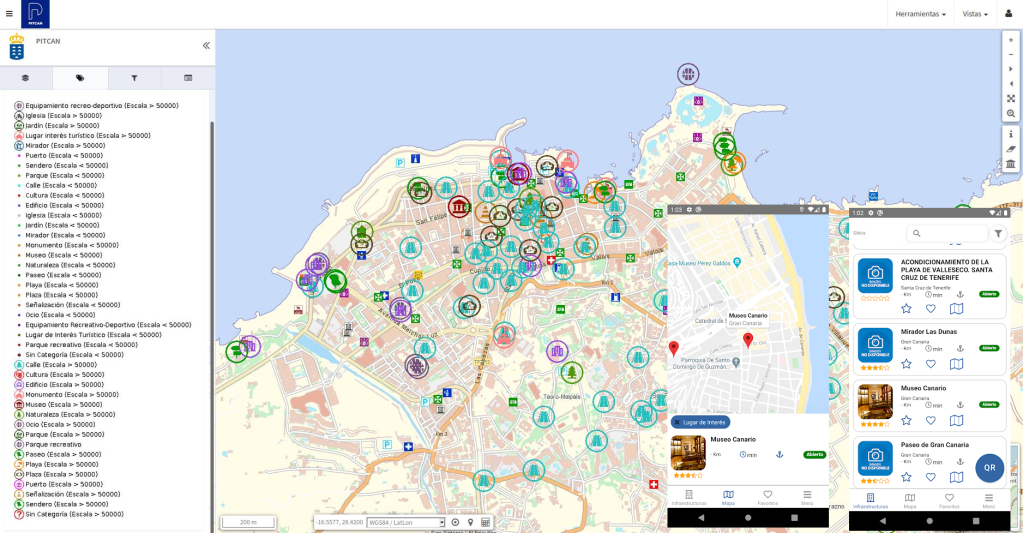
El Gobierno de Canarias tenía la necesidad de poder gestionar a nivel interno el Plan de Infraestructuras Turísticas de Canarias (PITCAN) y, de cara a los ciudadanos, dotarles de una app para consulta.
El PITCAN es un plan impulsado por la Dirección General de Infraestructuras Turísticas del Gobierno de Canarias. Se trata de una base de datos abierta, dinámica y flexible de infraestructuras turísticas, a modo de relación de actuaciones priorizadas.
Para dar solución a estas necesidades se ha implementado gvSIG Online, como plataforma para gestionar todas la información georreferenciada relativa al PITCAN y que, por ejemplo, incluye funcionalidades para generar informes automáticos en distintos formatos. Por otro lado, se ha desarrollado una app integrada con gvSIG Online y basada en gvSIG Mapps con herramientas orientadas a facilitar las consultas a los ciudadanos y visitantes interesados en el Plan de Infraestructuras Turísticas de Canarias.
Por si queréis echarle un vistazo, la app la tenéis disponible tanto para iOS como para Android.
Google Play: [https:]]
App Store: [https:]]
-
sur gvSIG Team: Planes locales de quemas (PLQ) con gvSIG Online
Publié: 28 June 2023, 8:00am CEST

El Plan Local de Quemas (PLQ) es una normativa reguladora fundamental en la gestión del uso cultural del fuego que se aplica en la Comunidad Valenciana, existiendo normativas similares en otras comunidades autónomas.
Los PLQ están orientados, principalmente, a minimizar los riesgos de incendios forestales. Regulan actividades tradicionales que requieren el uso del fuego como la quema de restos de poda, quema de matorrales, quema de márgenes de cultivo, uso del ahumador en actividades apícolas, etc.
Estos Planes Locales de Quemas tienen una clara componente territorial, estableciendo zonas de riesgos que establecen las limitaciones para realizar quemas en las distintas parcelas de un municipio.
Cada vez son más los municipios que implantan gvSIG Online como su solución para gestionar toda la información territorial. Con gvSIG Online es extremadamente sencillo generar un geoportal con el Plan Local de Quemas.
Os traemos 3 ejemplos de 3 municipios que tienen un geoportal público con el PLQ:
-
sur gvSIG Team: Curso-taller: Preparación de modelos de datos y fichas de búsqueda en gvSIG
Publié: 27 June 2023, 8:21am CEST

Hoy traemos la grabación de un curso-taller al que todos los que trabajáis con datos con dimensión geográfica deberíais echarle un vistazo (y dos, y tres… ). gvSIG Desktop dispone en sus últimas versiones de un conjunto de herramientas muy potentes para trabajar con modelos de datos. Lo dicho, no os lo perdáis…
-
sur QGIS Blog: QGIS Grant Programme 2023 Results
Publié: 26 June 2023, 8:32pm CEST
We are extremely pleased to announce the 4 winning proposals for our 2023 QGIS.ORG grant programme:
- QEP#266 QGIS Bug Tracker cleanup
- QEP#271 Porting to C++ and harmonization of Processing algorithms
- QEP#267 Add vertical CRS handling to QGIS
- QEP#268 Improve test result handling on QGIS CI
Funding for the programme was sourced by you, our project donors and sponsors! Note: For more context surrounding our grant programme, please see: QGIS Grants #8: Call for Grant Proposals 2023.
The QGIS.ORG Grant Programme aims to support work from our community that would typically not be funded by client/contractor agreements. This means that we did not accept proposals for the development of new features. Instead proposals focus on infrastructure improvements and polishing of existing features.
Voting to select the successful projects was carried out by our QGIS Voting Members. Each voting member was allowed to select up to 6 proposals. The full list of votes are available here (on the first sheet). The following sheets contain the calculations used to determine the winner (for full transparency). The table below summarizes the voting tallies for the proposals:

A couple of extra notes about the voting process:
- Voting was carried out based on the technical merits of the proposals and the competency of the applicants to execute on these proposals.
- No restrictions were in place in terms of how many proposals could be submitted per person / organization, or how many proposals could be awarded to each proposing person / organization.
- Voting was ‘blind’ (voters could not see the existing votes that had been placed).
We received 35 votes from 20 community representatives and 15 user group representatives.
On behalf of the QGIS.ORG project, I would like to thank everyone who submitted proposals for this call!
-
sur gvSIG Team: Geocoder of gvSIG Online. Versatility and power in address searches.
Publié: 26 June 2023, 8:20am CEST

The geocoding plugin of gvSIG Online is a powerful and versatile tool that allows us to search for places and locate them on the map. At the user level, its operation is extremely simple. Once the search string is entered, a list of possible candidates is displayed. At the administration level, the most interesting feature is that we can configure and add as many providers/geocoders as we need.
Of course, the plugin offers functionality for both forward geocoding (locating a place based on a search string) and reverse geocoding (finding the address by marking a position on the map).
From the administration panel, in the list of search providers, you can assign a category (to group the results of that provider under a separator) and assign an icon that will mark each of the suggested locations. Then, depending on the characteristics of each provider, different parameters may be required for them to function. Examples of providers include Nominatim from OpenStreetMap, Google Maps, custom layers such as points of interest or street data, etc.
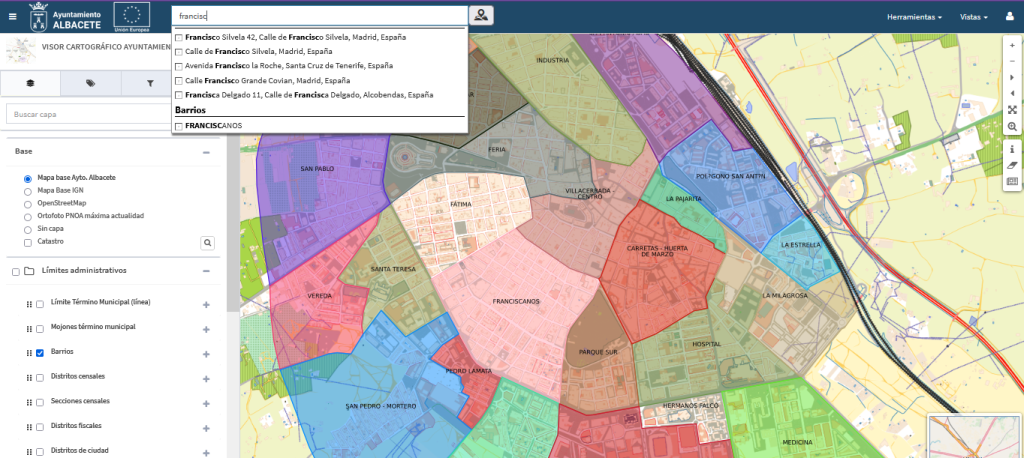
The plugin has very interesting options, such as configuring and establishing the priority order in which the results obtained from each of the providers used in the searches will be displayed.
And, of course, it is possible to configure custom providers for each territory, as we have done in various projects. Examples include Cartociudad in Spain or the Geocoder of the IDE in Uruguay.
-
sur gvSIG Team: Geocoder de gvSIG Online. Versatilidad y potencia en las búsquedas de direcciones.
Publié: 26 June 2023, 8:14am CEST

El plugin de geocodificación (geocoder) de gvSIG Online es una herramienta potente y versátil que nos permite buscar lugares y ubicarlos en el mapa. A nivel de usuario su funcionamiento es extremadamente simple, una vez introducida la cadena de búsqueda nos aparece un listado con los posibles candidatos. A nivel de administración, lo más interesante, es que podemos configurarlo y agregar tantos proveedores/geocodificadores como necesitemos.
Por supuesto el plugin dispone de funcionalidad tanto de geocodificación directa (la localización de una ubicación mediante una cadena de búsqueda) como geocodificación inversa (averiguar la dirección marcando una posición en el mapa).
Desde la parte de administración, en la lista de proveedores de búsqueda se les puede indicar una categoría (para englobar los resultados de ese proveedor bajo un separador) y se les puede asignar un icono que marcará cada una de las sugerencias propuestas . Luego, según las características de cada uno, se requerirán unos parámetros u otros para que puedan funcionar. Ejemplos de proveedores: Nominatim de OpenStreetMap, Google Maps, capas propias de – por ejemplo – puntos de interés o callejero, etc.

El plugin tiene opciones muy interesantes, como configurar y establecer el orden de prioridad en el que se mostrarán los resultados obtenidos de cada uno de los proveedores utilizados en las búsquedas.
Y, por supuesto, se pueden configurar proveedores propios de cada territorio, como así hemos realizado en diversos proyectos. Ejemplos: Cartociudad en España o el Geocoder de la IDE de Uruguay.
-
sur GRASS GIS: GRASS GIS 8.3.0 released
Publié: 24 June 2023, 5:42pm CEST
What’s new in a nutshell The GRASS GIS 8.3.0 release provides more than 360 changes compared to the 8.2 branch. This new minor release brings in many fixes and improvements in GRASS GIS modules and the graphical user interface (GUI) which now has the single window layout by default. Some of the most relevant changes include: support for parallelization in three raster modules, new options added to several temporal modules, and substantial clean-up of g. -
sur OTB Team: OTB release 8.1.2
Publié: 23 June 2023, 2:55pm CEST
Dear OTB community, We are happy to announce that OTB version 8.1.2 has been released! Ready to use binary packages are available on the package page of the website: You can also use the official docker image It is also possible to checkout the branch with git: git clone [https:] OTB -b release-8.1 The documentation […] -
sur gvSIG Team: Inventario de empresas y vertidos en áreas industriales con gvSIG Online
Publié: 23 June 2023, 7:57am CEST

Para el Ayuntamiento de Náquera se ha desarrollado un conjunto de herramientas, integradas con gvSIG Online con el objetivo de llevar a cabo la creación y gestión del inventario georreferenciado de las empresas ubicadas en las áreas industriales del municipio.
La herramienta web sirve para la captación de información de empresas (sector de actividad, volumen de negocio, número de empleados, características de los residuos, tomas de agua, salidas de emergencias…) situadas en los polígonos industriales y para su integración en un visor de mapas de gvSIG Online con la geolocalización de dichas empresas.
Parte de la información es introducida por las propias empresas mediante diversas herramientas desarrolladas con este objetivo. Por otro lado, el sistema dispone de opciones de validación de la información para los técnicos municipales. Además, la solución desarrollada también posee funcionalidad para gestionar el registro de empresas, de forma que puedan acceder al sistema y modificar sus datos.
Después de la introducción de los datos y validación por parte del Ayuntamiento la herramienta genera una capa que permite consultar las fichas de empresas registradas en la herramienta web desde el geoportal de áreas industriales de Nàquera. Al pulsar en el mapa, se muestra la información básica de la empresa, teniendo la opción de consultar la ficha completa de cada una de las empresas.
Por otro lado, la herramienta permite consultar los diferentes sectores de empresas por actividad, activando o no la visibilidad de cada sector, de todos los sectores o de aquellos que se seleccionen.
Del mismo modo que se rellenan los datos de la ficha de empresa, existe la opción de rellenar la información correspondiente a una ficha de control de vertidos. Estas fichas de control de vertidos pueden ser consultadas desde el geoportal de áreas industriales, siempre con acceso restringido. Cada empresa está asignada a Estaciones de Muestreo, de forma que cuando se detecta una incidencia en una estación de muestreo se pueden listar todas las empresas vinculadas a dicha estación de muestreo.
Un ejemplo más de como gvSIG Online se ha convertido en una solución idónea para gestionar la información de un municipio, en este caso de sus áreas industriales.

-
sur GeoSolutions: Information about latest alleged GeoServer security vulnerabilities
Publié: 22 June 2023, 11:54am CEST
You must be logged into the site to view this content.
-
sur gvSIG Team: Infraestructura de Datos Espaciales de Albacete. La Suite gvSIG como solución a la gestión integral de la información geográfica municipal
Publié: 22 June 2023, 8:08am CEST

El proyecto de implantación de la IDE de Albacete merece más de un post, por su ambición y resultados. De momento comenzamos compartiendo una presentación del alcance y trabajo desarrollado para convertir la Suite gvSIG en la solución a la gestión integral de la información geográfica municipal.
Algunos apuntes antes de dejaros con la presentación… se ha utilizado el control de versiones de gvSIG Desktop para las actividades de edición multiusuario de la información cartográfica, se ha incorporado gvSIG Mapps como herramienta de toma de datos en campo integrada con gvSIG Online, se ha realizado la integración con el gestor de expedientes SEGEX de SEDIPUALBA, se ha desarrollado una herramienta de localización y ruteo para el cementerio municipal, plantillas varias para impresión, integración con el padrón – ahora georreferenciado -, adaptación a RT de Inspire, un completo y versátil geocoder, acceso a Catastro con datos protegidos a nivel interno,…
El proyecto de implantación de la IDE de Albacete es un ejemplo para cualquier administración local que quiera poner en marcha una solución similar. Un ejemplo, también, de por qué la tecnología gvSIG se ha convertido en un referente en el sector de la geomática.
Podéis acceder al portal de la IDE de Albacete aquí: [https:]]
Presentación del proyecto:
-
sur gvSIG Team: Implantación de la Infraestructura de Datos Espaciales de Alzira. Proyectos en gvSIG Online
Publié: 21 June 2023, 8:01am CEST
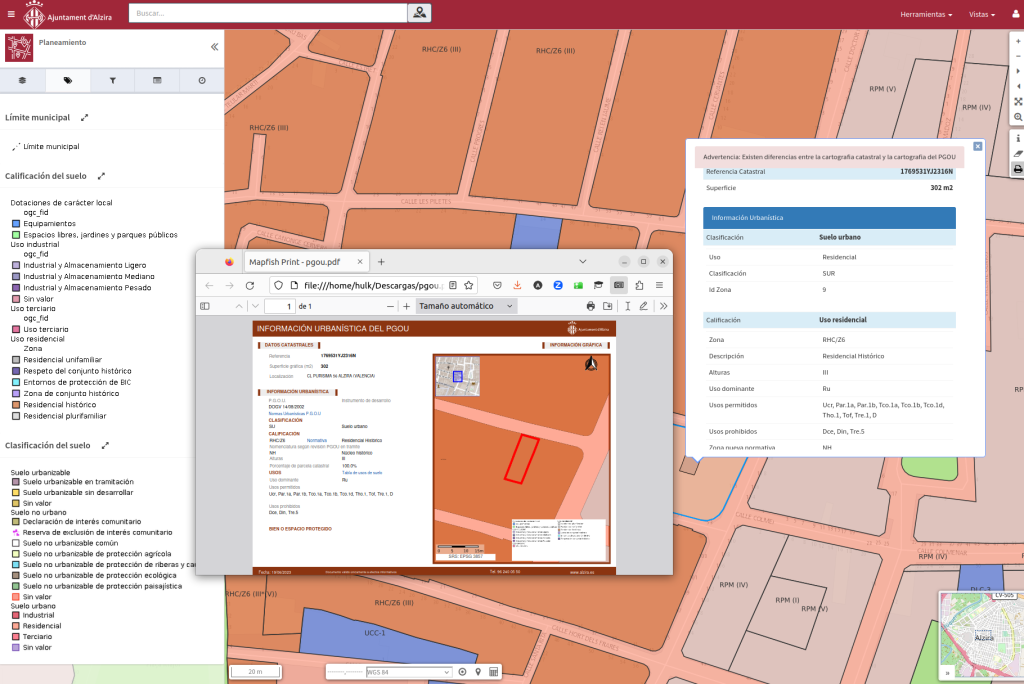
El Ayuntamiento de Alzira es otra más de la administraciones locales que ha apostado por la Suite gvSIG como la tecnología base para poner en marcha su Infraestructura de Datos Espaciales. Un proyecto que, más allá de todos los visores de mapas internos, en poco tiempo ha permitido publicar diversos geoportales como los de planeamiento, infraestructuras, plan local de quemas, etc.
Es interesante reseñar que además de la propia IDE montada con gvSIG Online, se ha integrado gvSIG Mapps para la toma de datos en campo y el gestor de expedientes de Indenova. Entre los desarrollos a medida, destaca el proceso que permite generar de forma automática la cédula urbanística.
Podéis acceder a los distintos visores públicos aquí: [https:]]
Presentación del proyectos:
-
sur GeoSolutions: GeoNode 4.1.0 is out!
Publié: 20 June 2023, 1:04pm CEST
You must be logged into the site to view this content.
-
sur gvSIG Team: Infraestructura de Datos Espaciales de Náquera con gvSIG Online
Publié: 20 June 2023, 7:50am CEST

Compartimos la presentación de la IDE del Ayuntamiento de Náquera, administración local de una población de 7.500 habitantes ubicada en el Parque Natural de la Sierra de Calderona y que multiplica su población en temporada estival. Pese a ser una administración local pequeña dispone de una gran cantidad y variedad de información geográfica que necesita gestionar.
La implementación de una IDE con gvSIG Online les ha permitido cambiar una situación de partida con información no catalogada, no compartida, duplicada, con dificultad para actualizar… por un sistema interoperable, organizado, estandarizado que facilita tanto la gestión interno como aporta un nuevo mecanismo para transmitir la información a los ciudadanos y visitantes del municipio.
-
sur iCarto Blog: Creating a Shareable QGIS Project with PostgreSQL/PostGIS Connections
Publié: 19 June 2023, 5:41pm CEST
One of the numerous features offered by QGIS is the ability to save our projects. We can store all the specific configurations, layers, styles, analyses, and other aspects in a file, allowing us to return to that point at any time. This is particularly useful when dealing with complex project organization. This functionality is also very helpful for collaborative work, as we can exchange projects with other team members.
However, when creating a project for sharing, certain aspects need to be taken into account, such as including connections to a database. In this article, we will discuss some interesting key points for accomplishing this.
Database Connections in QGIS Projects: The Recommended ApproachMost of the time, when creating a QGIS project with PostgreSQL/PostGIS layers, the data connection details are directly written, including storing the password in plain text within the project.
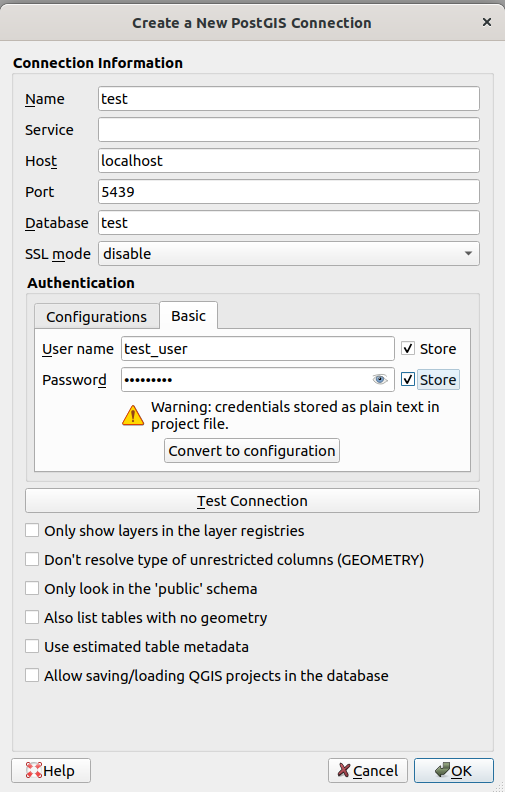
When done this way, within the project file created by QGIS with .qgz/.qgs extension, there will be a line like this:
<datasource>dbname='test' host=localhost port=5439 user='test_user' password='test_user' sslmode=disable key='id' srid=4326 type=Point checkPrimaryKeyUnicity='0' table="public"."cities" (geom)</datasource>This approach creates several problems when it comes to deploying the project or sharing it with others:
- Usernames and passwords need to be shared among several people, making it impossible to establish logical individual or group permissions.
- If we don’t hardcode the username and password, every person using the project will have to enter the data each time.
- Passwords are stored in plain text.
- If the server needs to be changed, for example, from a testing environment to a production one, the project needs to be modified.
- …
Although there are some ways to improve this situation, such as using
.pgpass, using the Authentication Manager, or using custom embedded scripts within the project, they are not the best options and have issues.The best approach, or at least the one we can recommend based on our experience, is to associate the connection details with an identifier (a pre-agreed name) and establish the connection in QGIS using the same identifier.
PostgreSQL allows achieving this through the Connection Service File. It is a text file located in Linux at
~/.pg_service.confand in Windows at%APPDATA%\postgresql\.pg_service.conf, and it would look like this:[test] host=localhost port=5439 dbname=test user=test_user password=test_user sslmode=disable # Avoid hardcode the password in prod [production] host=my.production.server port=5432 dbname=my_project user=my_userIn QGIS, the connection would be established like this:
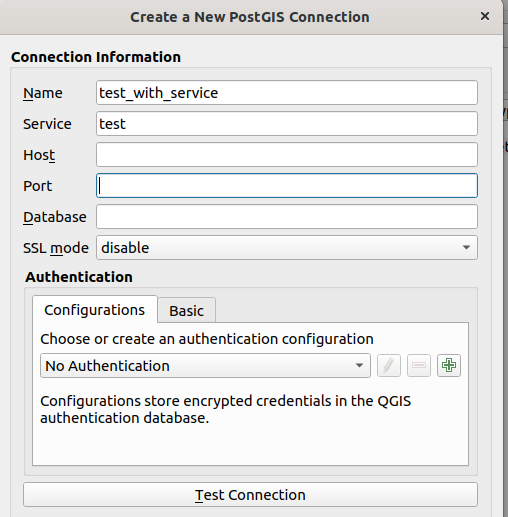
Here, you only need to fill in the connection name and the service name, which will be our identifier (the text within the brackets) in the
.pg_service.conffile. This is explained in more detail in the QGIS documentation.The advantages of using connections with an identifier are clear and solve the aforementioned problems. One person can prepare the project locally, and then, when moving to production, they only need to send the project and indicate the connection name and parameters that the rest of the team should fill in the
.pg_service.conffile.Furthermore, since this file is directly managed by libpq, the standard PostgreSQL client library used by 99% of applications, this strategy will work with any other client that needs to use that database connection, not just QGIS.
For example, in console commands:
ogrinfo PG:"service=test" cities psql service=testor in QGIS scripts:
layer = QgsVectorLayer("service=test table=cities (geom)", "Cities", "postgres") QgsProject.instance().addMapLayer(layer)The Service File allows defining numerous parameters, and few of them are mandatory. For instance, if we don’t define the password, any application using
libpqwill execute a normal workflow to try to discover it: searching in thePGPASSWORDvariable, checking the existence of the.pgpassfile, or directly prompting us to provide it.La entrada Creating a Shareable QGIS Project with PostgreSQL/PostGIS Connections se publicó primero en iCarto.
-
sur GeoTools Team: GeoTools 28.4 Released
Publié: 19 June 2023, 10:42am CEST
The GeoTools team is pleased to share the availability GeoTools 28.4: geotools-28.4-bin.zip geotools-28.4-doc.zip geotools-28.4-userguide.zip geotools-28.4-project.zip This release is also available from the OSGeo Maven Repository and is made in conjunction with GeoServer 2.22.4. Release notes - GeoTools - 28.4 Bug GEOT-7266 WMTSCapabilities throws NPE for missing title GEOT-7345 WFS -
sur gvSIG Team: La Unión Europea avanza en la regulación de la Inteligencia Artificial
Publié: 19 June 2023, 8:47am CEST

La Inteligencia Artificial (IA) es una tecnología innovadora con el potencial de transformar diversas industrias y mejorar la vida de las personas. En su búsqueda por regular esta tecnología y garantizar su uso responsable, la Unión Europea ha propuesto el primer marco normativo de la UE para la IA, como parte de su estrategia digital.
Esta regulación no solo tiene implicaciones generales, sino que también afecta a campos específicos, como la geomática. En este contexto, en gvSIG estamos analizando distintas posibilidades para integrar tecnologías de IA en la Suite gvSIG.
La combinación de la geomática y la IA promete avances notables en la toma de decisiones basada en datos, la gestión del territorio y el análisis espacial.
La regulación de la IA en la UE sienta un precedente a nivel mundial y muestra el compromiso de la Unión Europea de liderar en el desarrollo y uso responsable de esta tecnología. Esta regulación también se aplica a proyectos como gvSIG. El futuro ya está aquí.
Más información: [https:]]
-
sur gvSIG Team: The European Union advances in the regulation of Artificial Intelligence
Publié: 19 June 2023, 8:33am CEST

Artificial Intelligence (AI) is an innovative technology with the potential to transform various industries and improve people’s lives. In its quest to regulate this technology and ensure its responsible use, the European Union has proposed the first regulatory framework for AI in the EU as part of its digital strategy.
This regulation not only has general implications but also affects specific fields such as geomatics. In this context, at gvSIG, we are exploring different possibilities to integrate AI technologies into the gvSIG Suite. The combination of geomatics and AI promises remarkable advancements in data-driven decision-making, land management, and spatial analysis.
The regulation of AI in the EU sets a global precedent and demonstrates the European Union’s commitment to lead in the development and responsible use of this technology. This regulation also applies to projects like gvSIG. The future is already here.
More information: [https:]]
-
sur GeoServer Team: GeoServer 2.22.4 Release
Publié: 19 June 2023, 2:00am CEST
GeoServer 2.22.4 release is now available with downloads ( bin, war, windows) , along with docs and extensions.
This is a maintenance release of GeoServer providing existing installations with minor updates and bug fixes.
GeoServer 2.22.4 is made in conjunction with GeoTools 28.4.
Thanks to Peter Smythe (AfriGIS) and Jody Garnett (GeoCat) for making this release. This is Peter’s first time making a GeoServer release and we would like to thank him for volunteering.
Release notesNew Feature:
- GEOS-10949 Control remote resources accessed by GeoServer
Improvement:
- GEOS-10973 DWITHIN delegation to mongoDB
Bug:
- GEOS-8162 CSV Data store does not support relative store paths
- GEOS-10906 Authentication not sent if connection pooling activated
- GEOS-10936 YSLD and OGC API modules are incompatible
- GEOS-10969 Empty CQL_FILTER-parameter should be ignored
- GEOS-10975 JMS clustering reports error about ReferencedEnvelope type not being whitelisted in XStream
- GEOS-10980 CSS extension lacks ASM JARs as of 2.23.0, stops rendering layer when style references a file
- GEOS-10981 Slow CSW GetRecords requests with JDBC Configuration
- GEOS-10993 Disabled resources can cause incorrect CSW GetRecords response
- GEOS-10994 OOM due to too many dimensions when range requested
- GEOS-10998 LayerGroupContainmentCache is being rebuilt on each ApplicationEvent
- GEOS-11015 geopackage wfs output builds up tmp files over time
- GEOS-11024 metadata: add datetime field type to feature catalog
Task:
- GEOS-10987 Bump xalan:xalan and xalan:serializer from 2.7.2 to 2.7.3
- GEOS-11008) Update sqlite-jdbc from 3.34.0 to 3.41.2.2
- GEOS-11010 Upgrade guava from 30.1 to 32.0.0
- GEOS-11011 Upgrade postgresql from 42.4.3 to 42.6.0
- GEOS-11012 Upgrade commons-collections4 from 4.2 to 4.4
- GEOS-11018 Upgrade commons-lang3 from 3.8.1 to 3.12.0
- GEOS-11020 Add test scope to mockito-core dependency
Sub-task:
- GEOS-10989 Update spring.version from 5.2.23.RELEASE to 5.2.24.RELEASE
For the complete list see 2.22.4 release notes.
About GeoServer 2.22 SeriesAdditional information on GeoServer 2.22 series:
- GeoServer 2.22 User Manual
- Update Instructions
- Metadata extension
- CSW ISO Metadata extension
- State of GeoServer (FOSS4G Presentation)
- GeoServer Beginner Workshop (FOSS4G Workshop)
- Welcome page (User Guide)
Release notes: ( 2.22.4 | 2.22.3 | 2.22.2 | 2.22.1 | 2.22.0 | 2.22-RC | 2.22-M0 )
-
sur GRASS GIS: Developing and updating GRASS GIS addons
Publié: 18 June 2023, 11:12pm CEST
The r.mblend experience In 2017, I had the opportunity to implement a DEM blending algorithm that had been theorised earlier by my colleague João Leitão. It was somewhat natural to develop it as a GRASS add-on, since I have long relied on it for map algebra and other geo-spatial computations. That is how the r.mblend add-on was born. Five years passed without me committing again to r.mblend. In the meantime many important things changed, GRASS version 8 was released and code management moved from SVN to git/GitHub. -
sur Tom Kralidis: new pygeoapi podcast with MapScaping
Publié: 18 June 2023, 2:25pm CEST
For those interested in pygeoapi, the project was recently featured on MapScaping (available on Apple Podcasts, Google Podcasts, Stitcher and Spotify). The MapScaping folks were great to work with and I’d like to thank them for making this happen and asking all the right questions. Enjoy! pygeoapi – A Python Geospatial Server -
sur gvSIG Team: El Mapa Sanitario, una herramienta para la planificación y ordenación en salud: El caso de Mauritania
Publié: 18 June 2023, 10:00am CEST
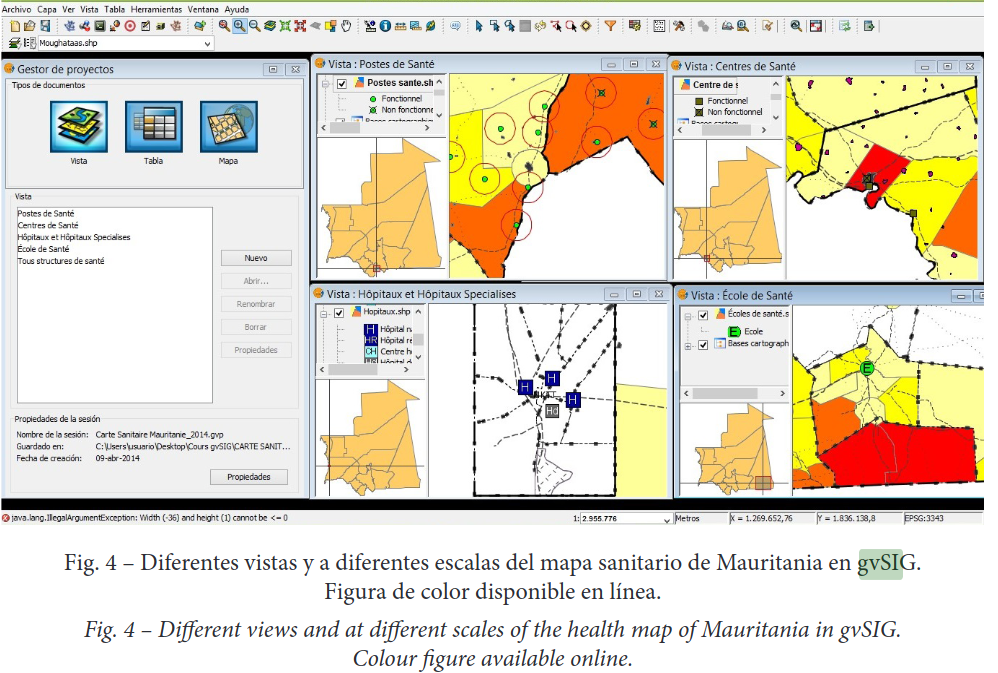
Los llamados mapas de salud son un instrumento para la promoción, democratización y derecho a la información pública sobre salud. También han sido utilizados para contextualizar y focalizar las desigualdades en el sector de la salud pública y otros sectores relacionados. Os traemos un artículo que tiene como objetivo explicar la elaboración del mapa sanitario de Mauritania y su valor en la planificación y reorganización de la oferta de servicios de salud en todos los niveles de la pirámide sanitaria del país, con el fin de responder a las crecientes demandas de información generadas por diversas organizaciones, pero principalmente por el sector sanitario mauritano.
Los sistemas de información geográfica fueron un apoyo importante para este trabajo… y el software seleccionado para elaborarlo fue gvSIG Desktop.
El artículo, disponible en castellano, lo podéis encontrar aquí: [https:]]
-
sur gvSIG Team: Comparación de información catastral antigua y actual con gvSIG Desktop
Publié: 17 June 2023, 9:03am CEST

En un artículo recientemente publicado en el Boletín de la Asociación Española de Geografía se muestra el uso de gvSIG para detectar los cambios en los usos del suelo-tipos de cultivo desde 1930 a la actualidad.
Título: Cartografía antigua catastral para la detección de cambios de cultivo: los mapas topográficos parcelarios de Alboraya (1930–2013)
Artículo disponible en abierto: [https:]] -
sur gvSIG Team: Curso-Taller de trabajo con modelos de datos de gvSIG Desktop
Publié: 16 June 2023, 8:49am CEST

Las pasadas Jornadas Internacionales de gvSIG contaban en su programa con un taller de trabajo con modelos de datos de gvSIG Desktop.
La grabación del taller no está disponible, pero sí un vídeo previo que grabamos de preparación del taller y que hemos decidido compartir por si es de utilidad.
Es un mini-curso de 1 hora de duración que os puede servir para ir más allá de lo habitual en el manejo de datos en un SIG. Muy recomendable a poco que manejéis modelos de datos algo complejos.
Talleres con formación tan avanzada no son tan habituales ni fáciles de acceder… así que mi recomendación es que no os lo perdáis:
-
sur gvSIG Team: Geoportales públicos de L’Eliana
Publié: 15 June 2023, 8:40am CEST
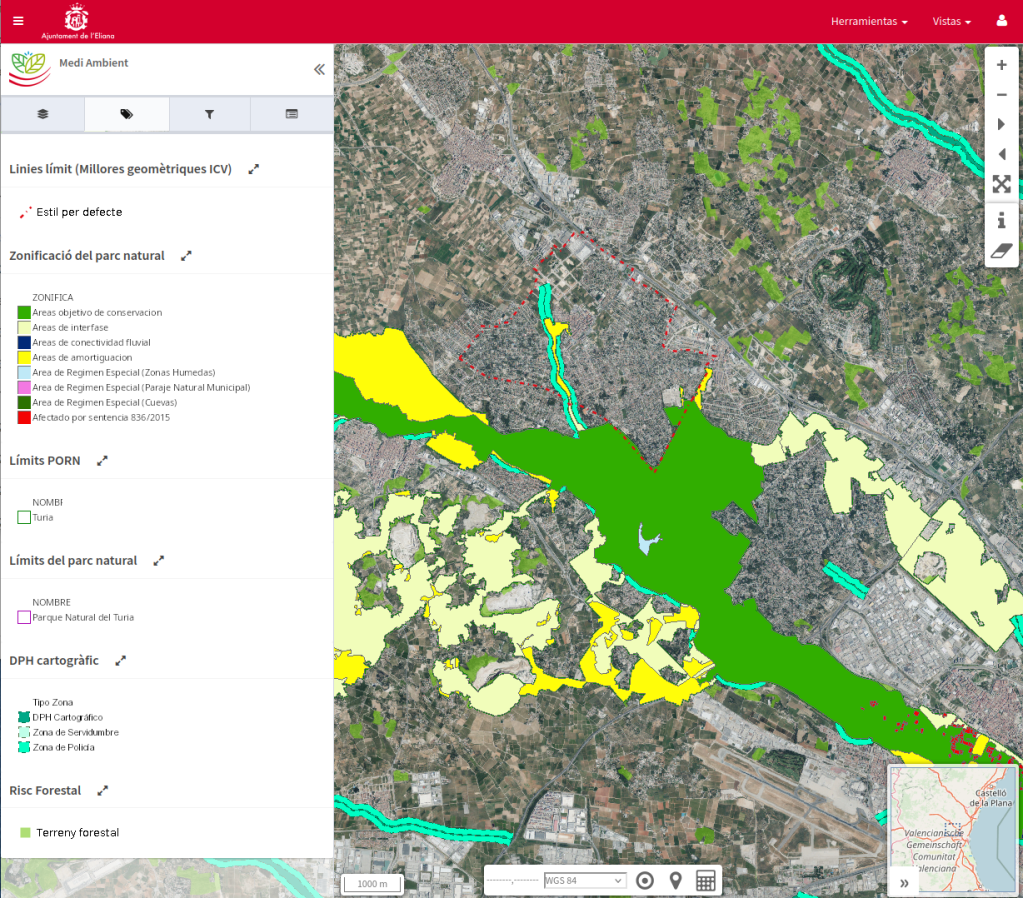
Uno de los ayuntamientos que acaba de sumarse al cada vez más numeroso conjunto de administraciones locales que tienen su IDE con gvSIG Online es el de L’Eliana. Otro ejemplo más de cómo no solo las grandes ciudades pueden disponer de soluciones y tecnologías avanzadas para gestionar su información con dimensión geográfica.
De partida, más allá del número creciente de geoportales privados y orientados a la gestión interna, hay ya cuatro visores de mapas públicos disponibles, cada uno impulsado desde su departamento correspondiente:
- Medio Ambiente. Permite la consulta del “Plan de ordenación de los recursos naturales (PORN)” del Parque Natural del Túria y de la cartografía de riesgos, tanto de inundaciones como forestal.
- Urbanismo. Podemos acceder, entre otras capas, a información como la clasificación y calificación urbanística o al catálogo de bienes y espacios protegidos del municipio.
- Servicios Municipales. Disponible para consulta información tan relevante como los servicios de saneamiento, distribución de agua y luminarias.
- Deportes. Cartografía de rutas saludables.
La página web principal es:
Y podéis acceder a los primeros geoportales públicos publicados en:
-
sur Camptocamp: SwitzerlandMobility - a new website with a unique map and content features
Publié: 15 June 2023, 2:00am CEST
Pièce jointe: [télécharger]
For the new version of their website, SwitzerlandMobility wanted to create a unique concept of classical information mashed up with geographic information on maps. -
sur gvSIG Team: Un vistazo a la Infraestructura de Datos Espaciales de Cullera (IDE)
Publié: 14 June 2023, 8:21am CEST

La IDE de Cullera se inició en el área de urbanismo, pero rápidamente se ha extendido a todas las áreas y departamentos municipales. En la actualidad cuenta con decenas de geoportales internos y una serie de visores de mapas públicos, donde consultar información relevante para los ciudadanos y visitantes del municipio.
Con este post vamos a iniciar una serie de artículos en los que os iremos presentando distintas Infraestructuras de Datos Espaciales implantadas con gvSIG Online, que se está convirtiendo en la solución de referencia para IDEs con software libre.
Vamos a repasar solo algunos de los geoportales públicos:
- Turismo: Es el geoportal principal que recopila información relativa al turismo. Agrupa un extenso conjunto de información como oferta hotelera, puntos y zona de Wi-Fi, gastronomía, museos, rutas y sendas turísticas, playas,…
- Movilidad y transporte: Permite consultar información relativa a movilidad como estacionamientos, carriles bici, líneas de autobús, puntos de carga eléctrica,…
- Deportes: Este geoportal está orientado a mostrar los recorridos de diferentes eventos deportivos como la Volta a peu a Cullera, el triatlón, la San Silvestre,…
- Agricultura y actividades cinegéticas: Contiene información de usos del suelo, bancos de tierras,…
- Servicios municipales: Visor de mapas con información de dotaciones municipales como centros sanitarios, bibliotecas, instalaciones deportivas, centros de enseñanza,…
- Playas: ahora que se acerca la temporada estival aquí se puede encontrar información tan interesante como playas accesibles, infraestructuras, banderas azules…
- Urbanismo: el inicio de la IDE, con toda la información típica de este tipo de geoportales relativa al urbanismo (calificación y clasificación) y catastro. Es interesante destacar que tiene normativa urbanística asociada a los elementos geográficos.
- Y más geoportales públicos: infraestructuras, medio ambiente y cambio climático, gestión de residuos, ciudadanía, arqueología, sanidad, fiestas y comercio. Y siguen creciendo…
La dirección de la página principal de la IDE de Cullera es:
El principal contenido de la IDE, además de los servicios de mapas, son sus geoportales. En el siguiente enlace se pueden visualizar todos los visores de mapas actualmente disponibles:
También es interesante hacer referencia a que gvSIG Online permite generar “Vistas compartidas” que no son más que URLs que permiten compartir una configuración concreta de un geoportal, en la que hay una serie de capas visibles o invisibles por defecto e, incluso, un determinado encuadre (zona o territorio del municipio visible al entrar).
Desde la web de turismo del Ayuntamiento de Cullera, accesible en el enlace [https:]] hay vistas compartidas en distintas secciones de esta web: playas, rutas naturales, monumentos… todas estas vistas compartidas enlazan con distintas configuraciones del geoportal de Turismo que forma parte de la IDE.
Por último, para acabar, indicar que entre las mejoras previstas para los próximos meses está la integración con el gestor de expedientes (SEGEX de Sedipualba) y la incorporación de gvSIG Mapps como app para toma de datos en campo.
-
sur GeoSolutions: GeoSolutions presence at FOSS4G 2023 in Prizren (Kosovo)
Publié: 13 June 2023, 5:48pm CEST
You must be logged into the site to view this content.
-
sur gvSIG Team: gvSIG Desktop aplicado al riesgo de impacto paisajístico
Publié: 13 June 2023, 8:11am CEST
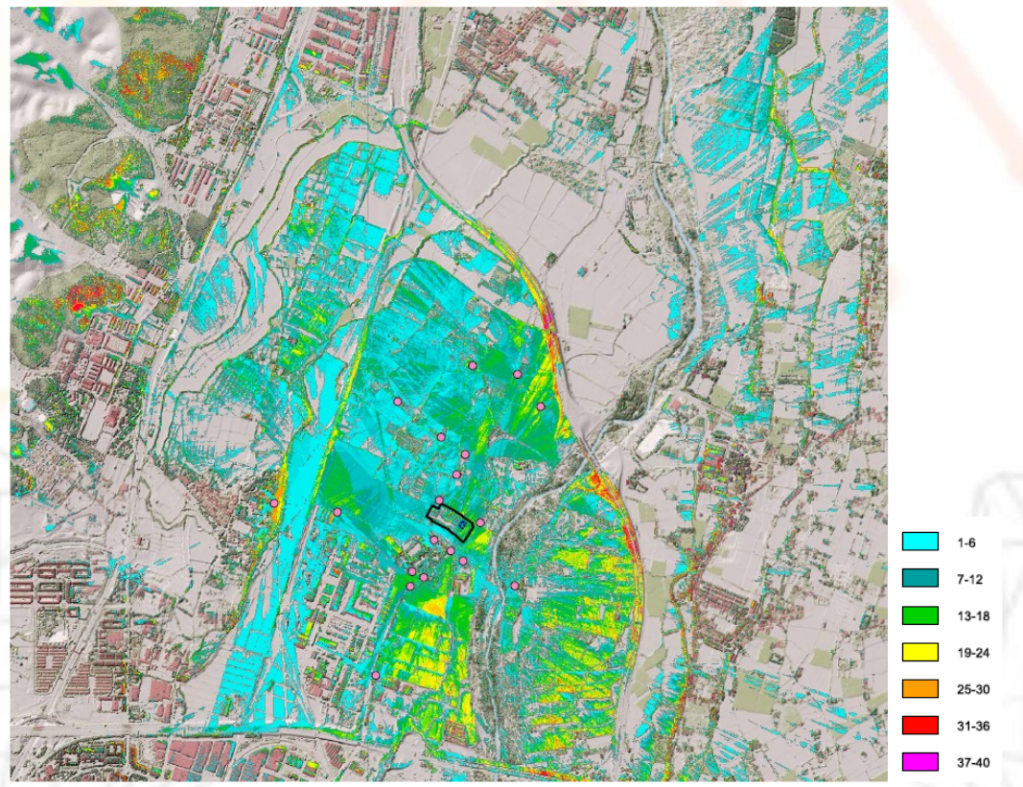
Hoy os traemos una presentación de la empresa Geoscan, una consultora con muchos años de experiencia en áreas como la de la ingeniería geológica y el medio ambiente. En este caso nos muestran el uso de gvSIG Desktop para analizar el impacto paisajístico de las instalaciones de una empresa de producción y comercialización de semillas.
-
sur OPENGIS.ch: Unterstützung für WMTS im QGIS Swiss Locator
Publié: 13 June 2023, 7:42am CEST

Das QGIS swiss locator Plugin erleichtert in der Schweiz vielen Anwendern das Leben dadurch, dass es die umfangreichen Geodaten von swisstopo und opendata.swiss zugänglich macht. Darunter ein breites Angebot an GIS Layern, aber auch Objektinformationen und eine Ortsnamensuche.
Dank eines Förderprojektes der Anwendergruppe Schweiz durfte OPENGIS.ch ihr Plugin um eine zusätzliche Funktionalität erweitern. Dieses Mal mit der Integration von WMTS als Datenquelle, eine ziemlich coole Sache. Doch was ist eigentlich der Unterschied zwischen WMS und WMTS?
WMS vs. WMTSZuerst zu den Gemeinsamkeiten: Beide Protokolle – WMS und WMTS – sind dazu geeignet, Kartenbilder von einem Server zu einem Client zu übertragen. Dabei werden Rasterdaten, also Pixel, übertragen. Ausserdem werden dabei gerenderte Bilder übertragen, also keine Rohdaten. Diese sind dadurch für die Präsentation geeignet, im Browser, im Desktop GIS oder für einen PDF Export.
Der Unterschied liegt im T. Das T steht für “Tiled”, oder auf Deutsch “gekachelt”. Bei einem WMS (ohne Kachelung) können beliebige Bildausschnitte angefragt werden. Bei einem WMTS werden die Daten in einem genau vordefinierten Gitternetz — als Kacheln — ausgeliefert.
Der Hauptvorteil von WMTS liegt in dieser Standardisierung auf einem Gitternetz. Dadurch können diese Kacheln zwischengespeichert (also gecached) werden. Dies kann auf dem Server geschehen, der bereits alle Kacheln vorberechnen kann und bei einer Anfrage direkt eine Datei zurückschicken kann, ohne ein Bild neu berechnen zu müssen. Es erlaubt aber auch ein clientseitiges Caching, das heisst der Browser – oder im Fall von Swiss Locator QGIS – kann jede Kachel einfach wiederverwenden, ganz ohne den Server nochmals zu kontaktieren. Dadurch kann die Reaktionszeit enorm gesteigert werden und flott mit Applikationen gearbeitet werden.
Warum also noch WMS verwenden?
Auch das hat natürlich seine Vorteile. Der WMS kann optimierte Bilder ausliefern für genau eine Abfrage. Er kann Beispielsweise alle Beschriftungen optimal platzieren, so dass diese nicht am Kartenrand abgeschnitten sind, bei Kacheln mit den vielen Rändern ist das schwieriger. Ein WMS kann auch verschiedene abgefragte Layer mit Effekten kombinieren, Blending-Modi sind eine mächtige Möglichkeit, um visuell ansprechende Karten zu erzeugen. Weiter kann ein WMS auch in beliebigen Auflösungen arbeiten (DPI), was dazu führt, dass Schriften und Symbole auf jedem Display in einer angenehmen Grösse angezeigt werden, währenddem das Kartenbild selber scharf bleibt. Dasselbe gilt natürlich auch für einen PDF Export.
Ein WMS hat zudem auch die Eigenschaft, dass im Normalfall kein Caching geschieht. Bei einer dahinterliegenden Datenbank wird immer der aktuelle Datenstand ausgeliefert. Das kann auch gewünscht sein, zum Beispiel soll nicht zufälligerweise noch der AV-Datensatz von gestern ausgeliefert werden.
Dies bedingt jedoch immer, dass der Server das auch entsprechend umsetzt. Bei den von swisstopo via map.geo.admin.ch publizierten Karten ist die Schriftgrösse auch bei WMS fix ins Kartenbild integriert und kann nicht vom Server noch angepasst werden.
Im Falle von QGIS Swiss Locator geht es oft darum, Hintergrundkarten zu laden, z.B. Orthofotos oder Landeskarten zur Orientierung. Daneben natürlich oft auch auch weitere Daten, von eher statischer Natur. In diesem Szenario kommen die Vorteile von WMTS bestmöglich zum tragen. Und deshalb möchten wir der QGIS Anwendergruppe Schweiz im Namen von allen Schweizer QGIS Anwender dafür danken, diese Umsetzung ermöglicht zu haben!
Der QGIS Swiss Locator ist das schweizer Taschenmesser von QGIS. Fehlt dir ein Werkzeug, das du gerne integrieren würdest? Schreib uns einen Kommentar!
-
sur Lutra consulting: Webinar: Processing LiDAR data in QGIS 3.32
Publié: 12 June 2023, 11:00am CEST
Join this webinar to learn more about the new features in QGIS to process LiDAR data:
Date: Monday, June 26, 2023 at 14:00 GMT
Duration: 30 minutes + 15 minutes Q&A session
Speaker: Martin Dobias, CTO at Lutra Consulting with more than 15 years of QGIS development experience
Description
Point clouds are an increasingly popular data type thanks to the decreasing cost of their acquisition through lidar surveys and photogrammetry. On top of that, more and more national mapping agencies release high resolution point cloud data (spanning large areas and consisting of billions of points), unlocking many new use cases.
This webinar will summarize the latest QGIS release 3.32 and the addition of tools for point cloud analysis right from QGIS Processing toolbox: clip, filter, merge, export to raster, extract boundaries and more - all backed by PDAL library that already ships with QGIS, without having to rely on third party proprietary software.
This work was made possible by the generous donations to our crowdfunding.
-
sur gvSIG Team: Control de versiones y edición de cartografía multiusuario con software libre
Publié: 12 June 2023, 8:01am CEST

Uno de los desarrollos más avanzados que han llegado a gvSIG Desktop es su control de versiones, VCSGIS, y que lo ha convertido en una herramienta fundamental para resolver las problemáticas de edición avanzada a las que el software libre no tenía respuesta.
En esta presentación podréis conocer qué es VCSGIS y todo lo que permite hacer
-
sur GeoSolutions: GeoSolutions at WAGIS 2023 in Tacoma, WA 14-15 June
Publié: 9 June 2023, 5:48pm CEST
You must be logged into the site to view this content.
-
sur gvSIG Team: Plataforma de información geográfica del Estado de Tocantins, Brasil
Publié: 9 June 2023, 7:56am CEST
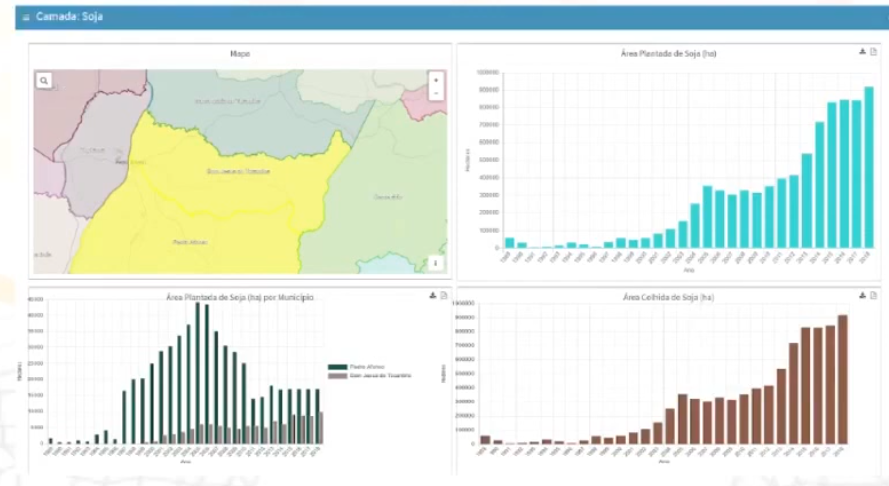
Os traemos la presentación de otro interesante proyecto de implantación de gvSIG Online, en este caso en el Estado de Tocantins (Brasil) y que ha permitido publicar numerosas capas de información geográfica, estructurada en diversos geoportales.
De este proyecto, además, destacamos el desarrollo de herramientas en gvSIG Online para la generación de dashboards o cuadros de mandos.
-
sur Lutra consulting: Virtual Point Clouds (VPC)
Publié: 8 June 2023, 4:00pm CEST
As a part of our crowdfunding campaign we have introduced a new method to handle a large number of point cloud files. In this article, we delve into the technical details of the new format, rationale behind our choice and how you can create, view and process virtual point cloud files.
RationaleLidar surveys of larger areas are often multi-terabyte datasets with many billions of points. Having such large datasets represented as a single point cloud file is not practical due to the difficulties of storage, transfer, display and analysis. Point cloud data are therefore typically stored and distributed split into square tiles (e.g. 1km x 1km), each tile having a more manageable file size (e.g. ~200 MB when compressed).
Tiling of data solves the problems with size of data, but it introduces issues when processing or viewing an area of interest that does not fit entirely into a single tile. Users need to develop workflows that take into account multiple tiles and special care needs to be taken to deal with data near edges of tiles to avoid unwanted artefacts in outputs. Similarly, when viewing point cloud data, it becomes cumbersome to load many individual files and apply the same symbology.
Here is an example of several point cloud tiles loaded in QGIS. Each tile is styled based on min/max Z values of the tile, creating visible artefacts on tile edges. The styling has to be adjusted for each layer separately:
Virtual Point Clouds
In the GIS world, many users are familiar with the concept of virtual rasters. A virtual raster is a file that simply references other raster files with actual data. In this way, GIS software then treats the whole dataset comprising many files as a single raster layer, making the display and analysis of all the rasters listed in the virtual file much easier.
Borrowing the concept of virtual rasters from GDAL, we have introduced a new file format that references other point cloud files - and we started to call it virtual point cloud (VPC). Software supporting virtual point clouds handles the whole tiled dataset as a single data source.
At the core, a virtual point cloud file is a simple JSON file with .vpc extension, containing references to actual data files (e.g. LAS/LAZ or COPC files) and additional metadata extracted from the files. Even though it is possible to write VPC files by hand, it is strongly recommended to create them using an automated tool as described later in this post.
On a more technical level, a virtual point cloud file is based on the increasingly popular STAC specification (the whole file is a STAC API ItemCollection). For more details, please refer to the VPC specification that also contains best practices and optional extensions (such as overviews).
Virtual Point Clouds in QGISWe have added support for virtual point clouds in QGIS 3.32 (released in June 2023) thanks to the many organisations and individuals who contributed to our last year’s joint crowdfunding with North Road and Hobu. The support in QGIS consists of three parts:
- Create virtual point clouds from a list of individual files
- Load virtual point clouds as a single map layer
- Run processing algorithms using virtual point clouds
Those who prefer using command line tools, PDAL wrench includes a build_vpc command to create virtual point clouds, and all the other PDAL wrench commands support virtual point clouds as the input.
Using Virtual Point CloudsIn this tutorial, we are going to generate a VPC using the new Processing algorithm, load it in QGIS and then generate a DTM from terrain class. You will need QGIS 3.32 or later for this. For the purpose of this example, we are using the LiDAR data provided by the IGN France data hub.
In QGIS, open the Processing toolbox panel, search for the Build virtual point cloud (VPC) algorithm ((located in the Point cloud data management group):
VPC algorithm in the Processing toolbox
In the algorithm’s window, you can add point cloud layers already loaded in QGIS or alternatively point it to a folder containing your LAZ/LAS files. It is recommended to also check the optional parameters:
-
Calculate boundary polygons - QGIS will be able to show the exact boundaries of data (rather than just rectangular extent)
-
Calculate statistics - will help QGIS to understand ranges of values of various attributes
-
Build overview point cloud - will also generate a single “thinned” point cloud of all your input data (using only every 1000th point from original data). The overview point cloud will be created next to the VPC file - for example, for mydata.vpc, the overview point cloud would be named mydata-overview.copc.laz
VPC algorithm inputs, outputs and options
After you set the output file and start the process, you should end up with a single VPC file referencing all your data. If you leave the optional parameters unchecked, the VPC file will be built very quickly as the algorithm will only read metadata of input files. With any of the optional parameters set, the algorithm will read all points which can take some time.
Now you can load the VPC file in QGIS as any other layer - using QGIS browser, Data sources dialog in QGIS or by doing drag&drop from a file browser. After loading a VPC in QGIS, the 2D canvas will show boundaries of individual files - and as you zoom in, the actual point cloud data will be shown. Here, a VPC loaded together with the overview point cloud:
Virtual point cloud (thinned version) generated by the VPC algorithm
Zooming in QGIS in 2D map with elevation shading - initially showing just the overview point, later replaced by the actual dense point cloud:
VPC output on 2D: displaying details when zooming in
In addition to 2D maps, you can view the VPC in a 3D map windows too:
If the input files for VPCs are not COPC files, QGIS will currently only show their boundaries in 2D and 3D views, but processing algorithms will work fine. It is however possible to use the Create COPC algorithm to batch convert LAS/LAZ files to COPC files, and then load VPC with COPC files.
It is also worth noting that VPCs also work with input data that is not tiled - for example, in some cases the data are distributed as flightlines (with lots of overlaps between files). While this is handled fine by QGIS, for the best performance it is generally recommended to first tile such datasets (using the Tile algorithm) before doing further display and analysis.
Processing Data with Virtual Point CloudsNow that we have the VPC generated, we can run other processing algorithms. For this example, we are going to convert the ground class of the point cloud to a digital terrain model (DTM) raster. In the QGIS Processing toolbox, search for Export to raster algorithm (in the Point cloud conversion group):
VPC layer can be used as an input to the point cloud processing algorithm
This will use the Z values from the VPC layer and generate a terrain raster based on a user defined resolution. The algorithm will process the tiles in parallel, taking care of edge artefacts (at the edges, it will read data also from the neighbouring tiles). The output of this algorithm will look like this:
Converting a VPC layer to a DTM
The output raster contains holes where there were no points classified as ground. If needed for your use case, you can fill the holes using Fill nodata algorithm from GDAL in the Processing toolbox and create a smooth terrain model for your input Virtual Point Cloud layer:
Filling the holes in the DTM
Virtual point clouds can be used also for any other algorithms in the point cloud processing toolbox. For more information about the newly introduced algorithms, please see our previous blog post.
All of the point cloud algorithms also allow setting filtering extent, so even with a very large VPC, it is possible to run algorithms directly on a small region of interest without having to create temporary point cloud files. Our recommendation is to have input data ready in COPC format, as this format provides more efficient access to data when spatial filtering is used.
Streaming Data from Remote Sources with VPCsOne of the very useful features of VPCs is that they work not only with local files, but they can also reference data hosted on remote HTTP servers. Paired with COPCs, point cloud data can be streamed to QGIS for viewing and/or processing - that means QGIS will only download small portions of data of a virtual point cloud, rather than having to download all data before they could be viewed or analysed.
Using IGN’s lidar data provided as COPC files, we have built a small virtual point cloud ign-chambery.vpc referencing 16 km2 of data (nearly 700 million points). This VPC file can be loaded in QGIS and used for 2D/3D visualisation, elevation profiles and processing, with QGIS handling data requests to the server as necessary. Processing algorithms only take a couple of seconds if the selected area of interest is small (make sure to set the “Cropping extent” parameter of algorithms).
All this greatly simplifies data access to point clouds:
-
Data producers can use very simple infrastructure - a server hosting static COPC files together with a single VPC file referencing those COPC files.
-
Users can use QGIS to view and process point cloud data as a single map layer, with no need to download large amounts of data, QGIS (and PDAL) taking care of streaming data as needed.
We are very excited about the opportunities that virtual point clouds are bringing to users, especially when combined with COPC format and access from remote servers!
Thanks again to all contributors to our crowdfunding campaign - without their generous support, this work would not have been possible.
Contact us if you would like to add more features in QGIS to handle, analyse or visualise lidar data.
-
sur QGIS Blog: Plugin Update May 2023
Publié: 8 June 2023, 9:35am CEST
In May 22 new plugins that have been published in the QGIS plugin repository.
Here’s the quick overview in reverse chronological order. If any of the names or short descriptions piques your interest, you can find the direct link to the plugin page in the table below the screenshot.
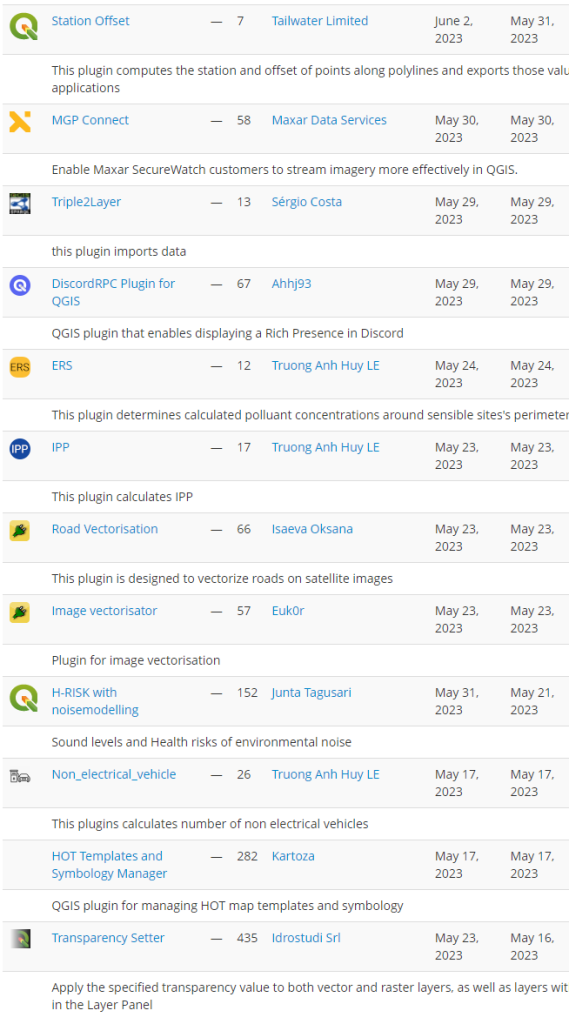

Station Offset This plugin computes the station and offset of points along polylines and exports those values to csv for other applications MGP Connect Enable Maxar SecureWatch customers to stream imagery more effectively in QGIS. Triple2Layer this plugin imports data DiscordRPC Plugin for QGIS QGIS plugin that enables displaying a Rich Presence in Discord ERS This plugin determines calculated polluant concentrations around sensible sites’s perimeters IPP This plugin calculates IPP Road Vectorisation This plugin is designed to vectorize roads on satellite images Image vectorisator Plugin for image vectorisation H-RISK with noisemodelling Sound levels and Health risks of environmental noise Non_electrical_vehicle This plugins calculates number of non electrical vehicles HOT Templates and Symbology Manager QGIS plugin for managing HOT map templates and symbology Transparency Setter Apply the specified transparency value to both vector and raster layers, as well as layers within the selected groups in the Layer Panel DBGI Creates geopackages that match the requirements for the DBGI project StyleLoadSave Load or Save active vector layer style PixelCalculator Interactively calculate the mean value of selected pixels of a raster layer. GISTDA sphere basemap A plugin for adding base map layers from GISTDA sphere platform ( [https:]] ). Adjust Style Adjust the style of a map with a few clicks instead of altering every single symbol (and symbol layer) for many layers, categories or a number of label rules. A quick way to adjust the symbology of all layers (or selected layers) consistantly, to check out how different colors / stroke widths / fonts work for a project, and to save and load styles of all layers – or even to apply styles to another project. With one click, it allows to: adjust color of all symbols (including color ramps and any number of symbol layers) and labels using the HSV color model (rotate hue, change saturation and value); change line thickness (i.e. stroke width of all symbols / symbol borders); change font size of all labels; replace a font family used in labels with another font family; save / load the styles of all layers at once into/from a given folder. APLS This plugin performs Average Path Length Similarity qaequilibrae Transportation modeling toolbox for QGIS QGPT Agent QGPT Agent is LLM Assistant that uses openai GPT model to automate QGIS processes FuzzyJoinTables Join tables using min Damerau-Levenshtein distance Chandrayaan-2 IIRS Generates reflectance from Radiance data of Imaging Infrared Spectrometer sensor of Chandrayaan 2 -
sur gvSIG Team: GeoETL de la plataforma gvSIG Online: Automatizar transformaciones de datos
Publié: 8 June 2023, 7:59am CEST
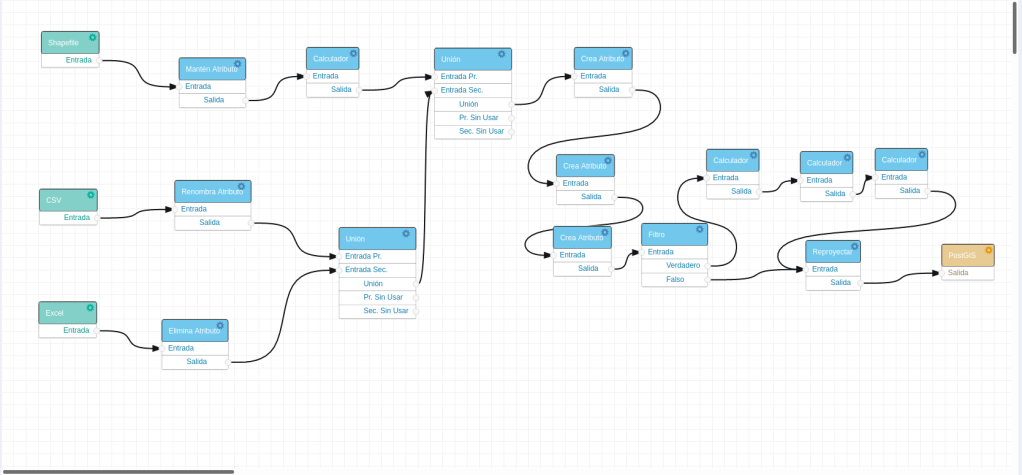
Una mejora considerable de gvSIG Online respecto a otros productos del mercado es su ETL. Gracias a su ETL, gvSIG Online podrá realizar integraciones con otras fuentes de datos de forma ágil y sin necesidad de desarrollo.
ETL es un plugin que se utiliza para automatizar tareas de transformaciones de datos, ya sean repetitivas o no, de manera que no sea necesario la manipulación de los datos a través de código. De esta manera, cualquier usuario es capaz de hacer una manipulación de los datos (geométricamente o no) o una homogeneización de datos que provengan de diferentes orígenes y formatos.
Esto es posible gracias a un canvas que representará gráficamente el proceso de transformación de los datos de una manera fácil e intuitiva.
Si queréis conocer todo el potencia de GeoETL, no os perdáis el vídeo:
-
sur gvSIG Team: Conociendo gvSIG Mapps
Publié: 7 June 2023, 8:02am CEST

Todo el mundo conoce gvSIG Desktop, el origen de el catálogo de soluciones que denominamos Suite gvSIG. Cada vez más organizaciones de todo el mundo están implantando gvSIG Online como su plataforma de gestión de datos espaciales y geoportales. Y, aunque menos conocido, crece el número de entidades que usan gvSIG Mapps… bien como app para toma de datos en campo, bien como apps desarrolladas con su framework.
¿Queréis saber más? Os contamos qué es realmente gvSIG Mapps:




